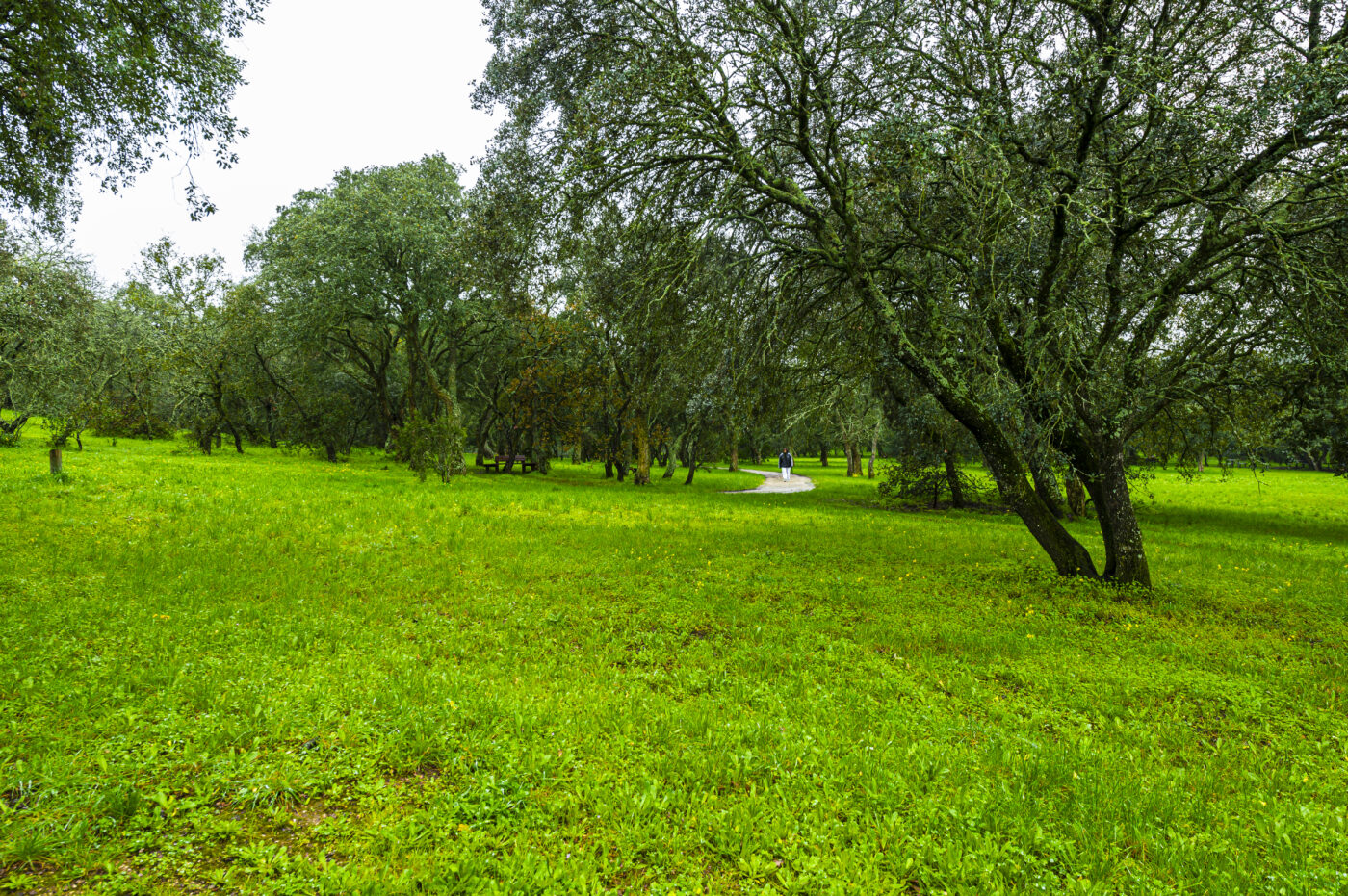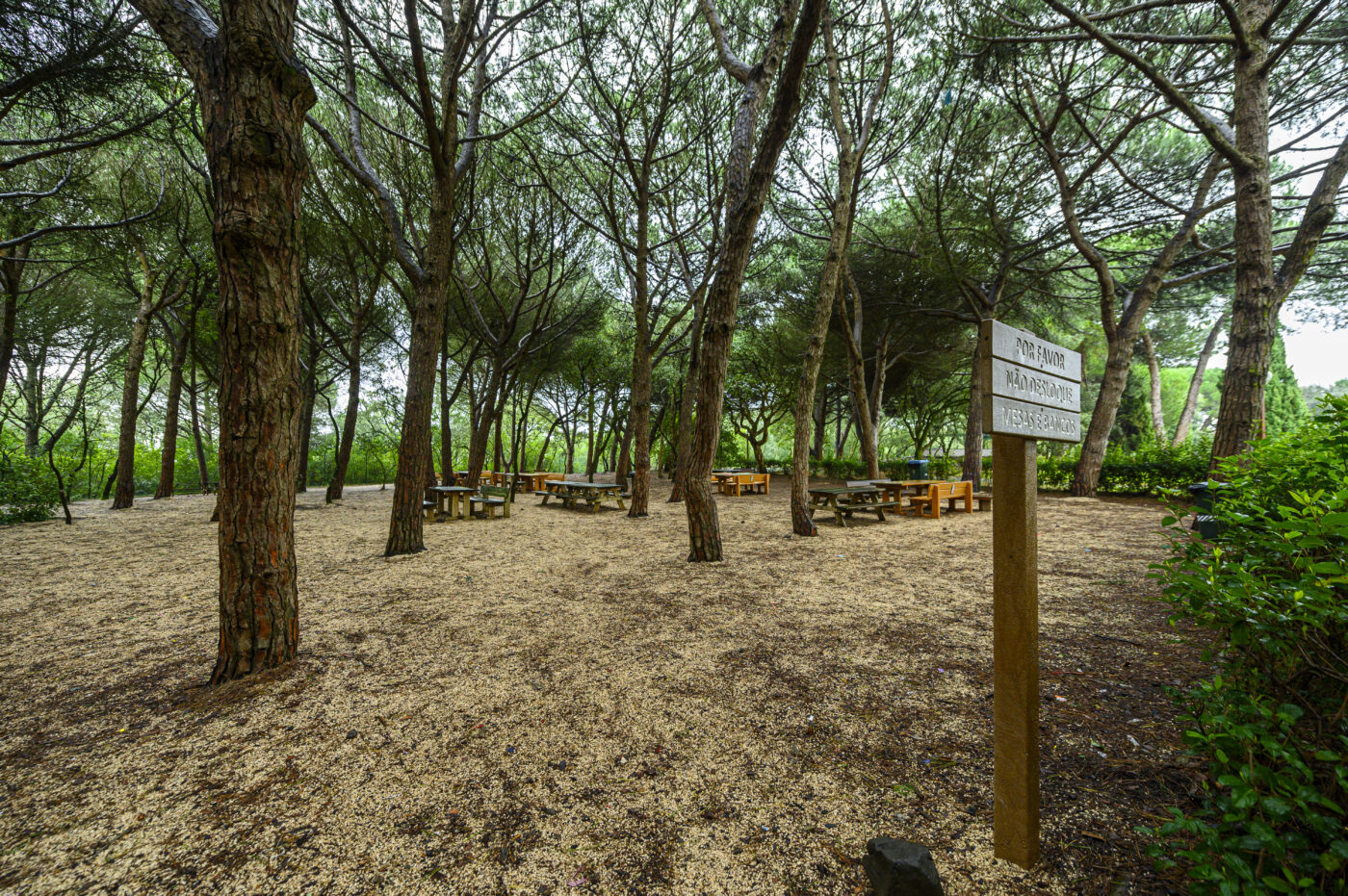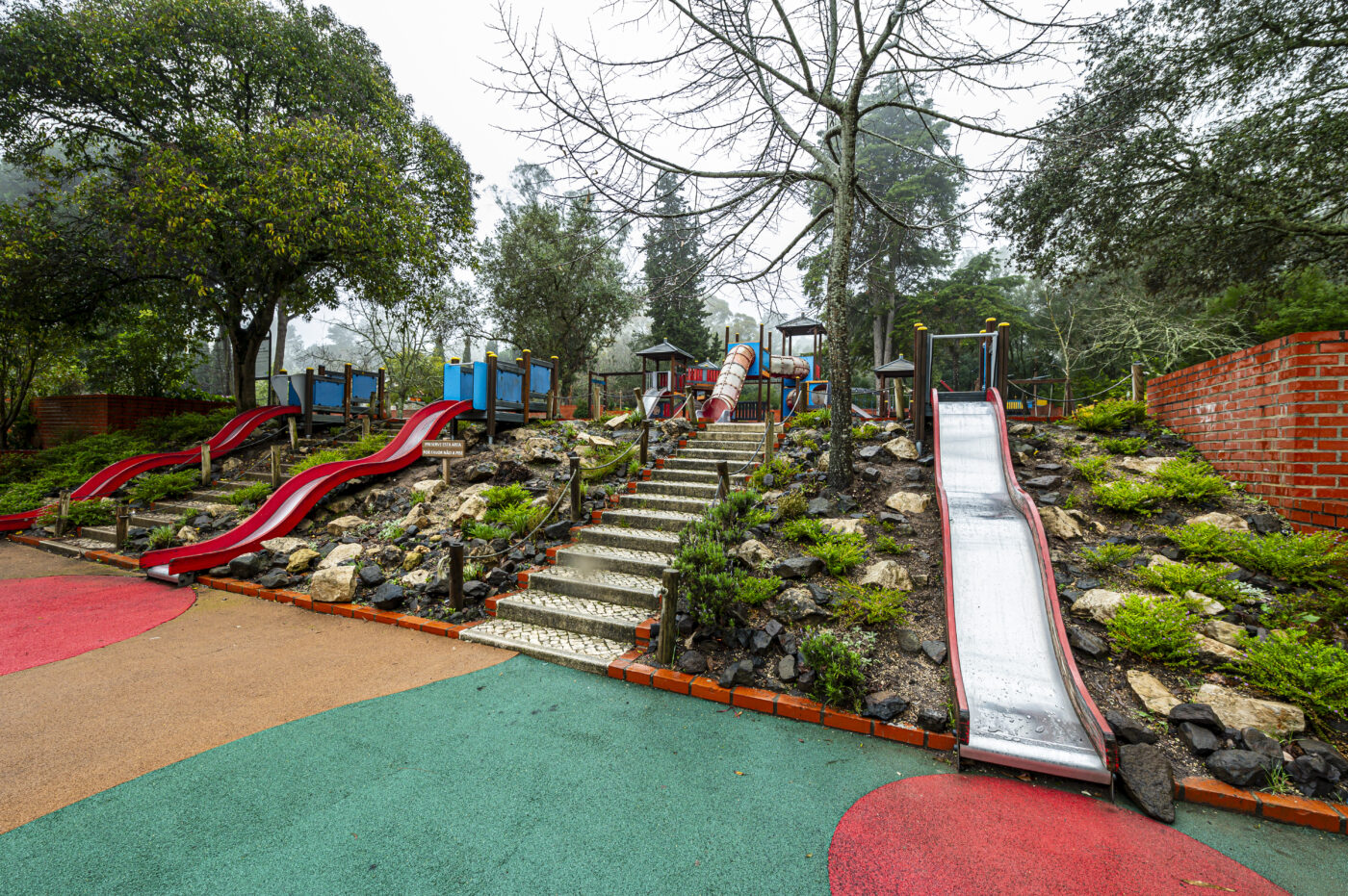This year, Open Conventos begins on the 22nd, with a presentation to organizers and partners, followed, on the 23rd, by a conference at Brotéria (from 5 pm), and the screening of the film Into Great Silence by Philip Gröning, about monastic life in the Grande Chartreuse monastery, motherhouse of the Order of Carthusians (Convent of São Pedro de Alcântara, at 8:30 pm).
On May 24th and 25th, former and current convents and monasteries open their doors to the general public who can also, through the website quovadislisboa.com, set out on a free route to discover a true network made up of this unique heritage of Lisbon. With the precious help of Quo Vadis Lisboa, we propose a brief look at five important religious houses in the capital that you can discover in detail in this edition of Open Conventos.
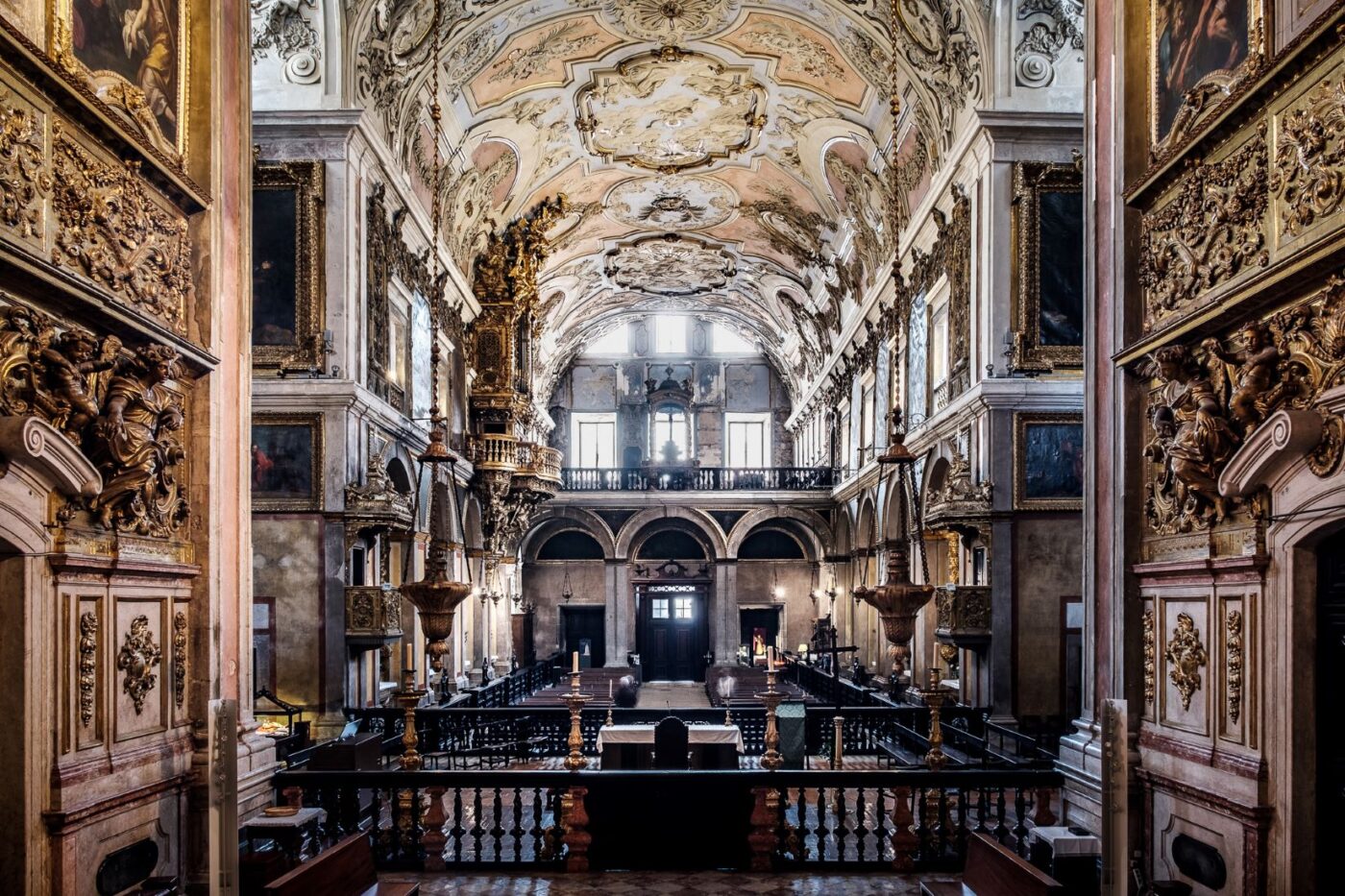
Mosteiro do Santíssimo Sacramento
Calçada do Combro, 84
This majestic example of Johannine Baroque is currently the Parish Church of Santa Catarina and the headquarters of the GNR District Command. It began to be built in 1647, having received the first 30 religious of the São Paulo First Hermit Order, from Serra de Ossa in Alentejo, in 1649. A few years later, the church began to be built, consecrated as a temple in December 1680 in a ceremony where King D. Pedro II may have been present.
The 1755 earthquake caused extensive damage to the church, with the stone vault collapsing. The new ceiling of the nave and sacristy received a monumental stucco decoration by the Swiss master plasterer Giovanni Grossi, highlighting also the canvases by André Gonçalves (c.1685 -1762) – a very important artist in the collection of the Casa Professa de São Roque – and Vieira Lusitano (1699-1783). In 1835, it became the Parish Church of Santa Catarina.
In addition to the treasures displayed in the sacristy, a panel of tiles from the beginning of the 18th century, representing episodes from the life of São Paulo Ermita, is one of the many attractions for the visit.
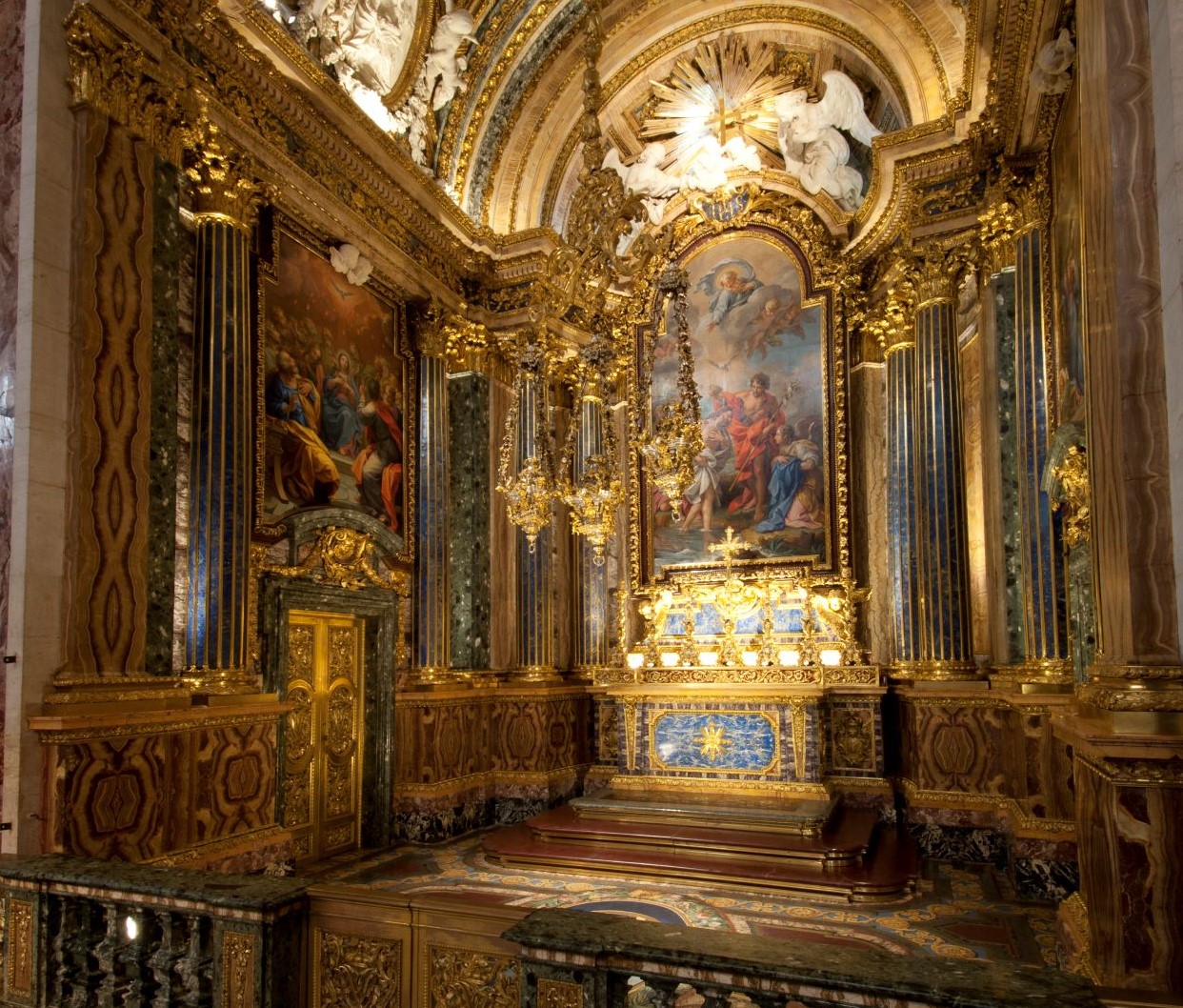
Casa Professa de São Roque
Largo Trindade Coelho
Intended to protect the population of Lisbon from the plague, D. Manuel ordered a relic of Saint Roque from Venice. To accommodate it, a hermitage was built in 1506 which, years later, donated to the Jesuits, gave rise to the order’s Professed House and the Church of São Roque, from the second half of the 16th century onwards, the headquarters of the Society of Jesus.
Inside the temple, the Mannerist and Baroque interior combines the best marble, gilded carving, painting, sculpture and tiles, highlighting the chapel of São João Baptista, commissioned by D. João V from Roman architects, built in Rome and sent to Lisbon in 1742. Four years after the great earthquake, which did not structurally damage the building, the Marquis of Pombal promulgates the “Law given for the proscription, denaturalization and expulsion of the regulars of the Society of Jesus”. The Church, the Casa Professa and the entire collection were donated, in 1768, to the Santa Casa da Misericórdia in Lisbon.
Classified as a national monument in 1910, in addition to the temple, the building currently houses the São Roque Museum and its notable (and unmissable) collection of Portuguese sacred art.
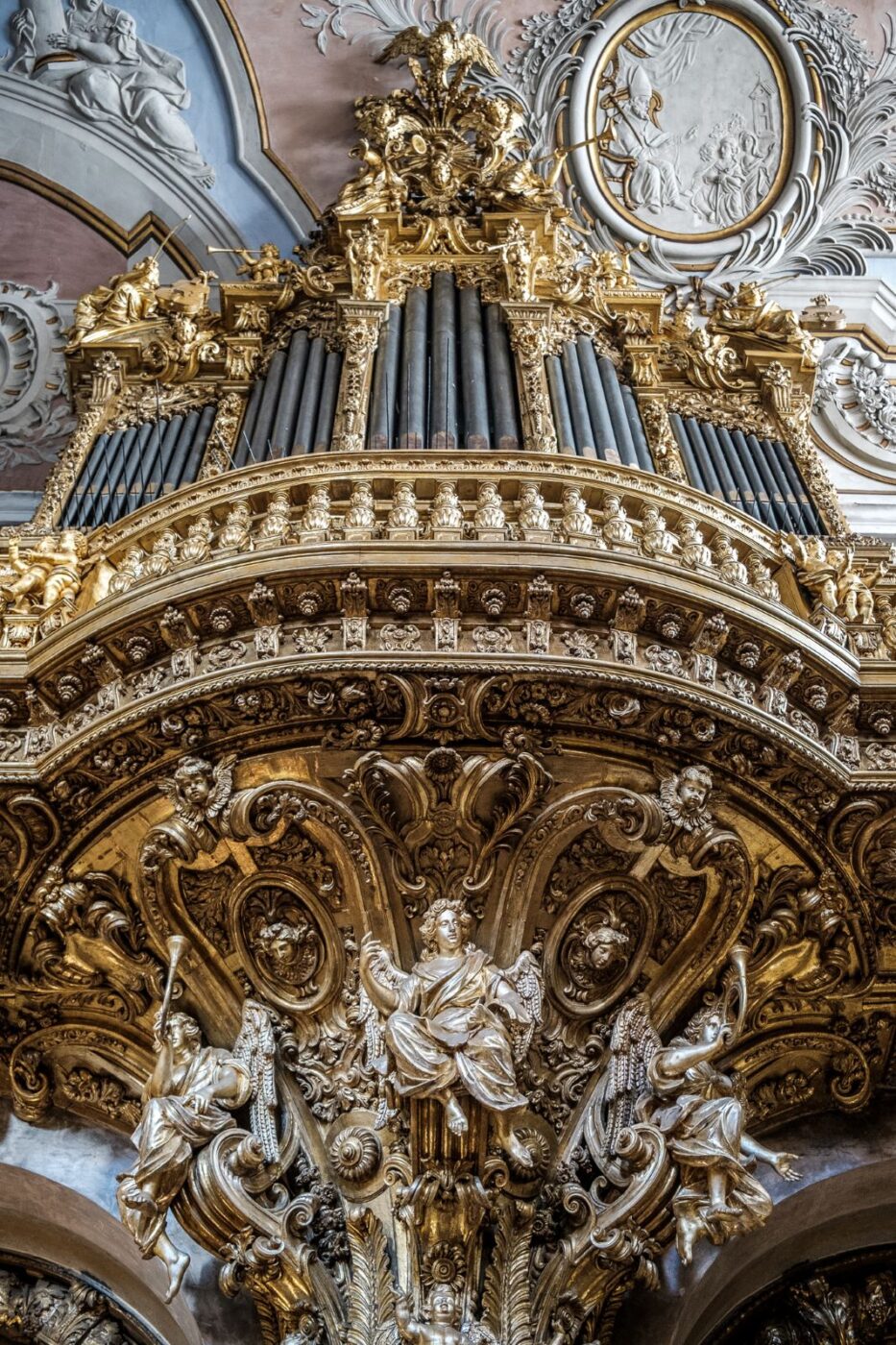
Mosteiro de São Vicente de Fora
Largo de São Vicente
The current building, in Mannerist style, designed by Filippo Terzi and Juan de Herrera, was built in 1582 by King Philip I of Portugal. The name “Fora”(“outside”) is justified because it is located outside the old Cerca Moura, since the founder of the first temple was D. Afonso Henriques, a deep devotee of São Vicente, in 1147.
Occupied by canons of the Regular Order of Saint Augustine, from its foundation until 1834, the date of the extinction of religious orders, the monastery keeps in memory the passage of Saint Anthony, as it was here that he lived his first days as a monk. Currently, the building hosts the services of the diocesan curia and is the place where the Cardinal Patriarch of Lisbon governs the diocese.
In addition to the curia, administrative services and Patriarchal Court, São Vicente de Fora also houses a museum that seeks to record the most important moments in the history and legacy of the Patriarchate of Lisbon. Unmissable on any visit, the wonderful 19th century organ, the monumental canopy over the main altar designed by Machado de Castro, and the panoramic view of Lisbon and the Tagus from the terrace.
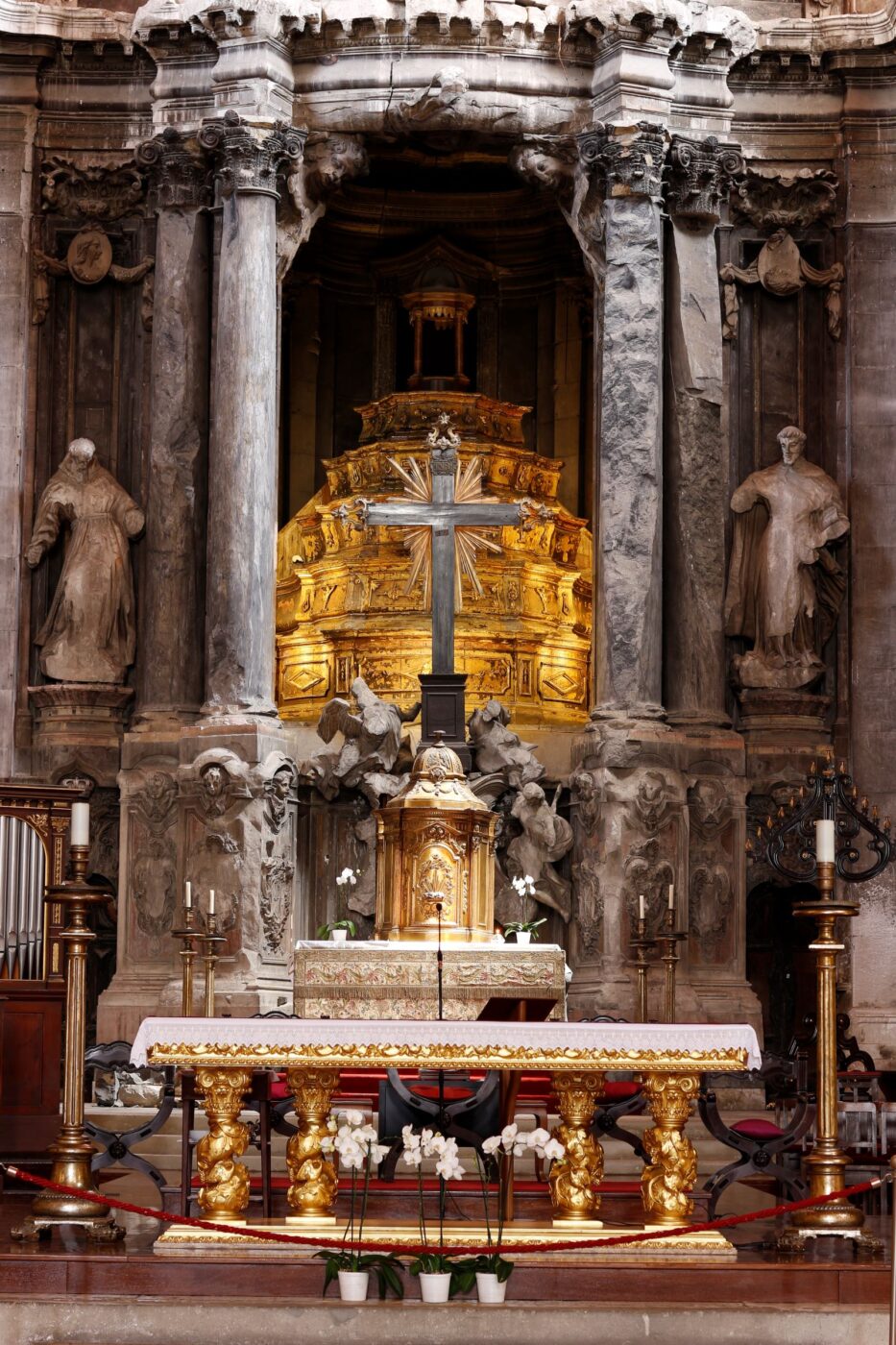
Convento de São Domingos de Lisboa
Largo de São Domingos
In one of the city’s most cosmopolitan squares stands the São Domingos Parish Church, a temple belonging to the first Dominican convent in Lisbon, founded in 1241. On the grounds surrounding the complex, the so-called Horta dos Frades, the Royal Hospital of All Saints was built from 1492 onwards.
Strongly affected by the 1755 Earthquake, the Convent of São Domingos was radically altered by the Baixa reconstruction project, namely with the construction of dormitories in the large block that delimits Rossio Square. After the extinction of religious orders, in the 19th century, the convent area was partially demolished with the opening of Rua de Dom Antão de Almada and Travessa Nova de São Domingos.
Although it suffered a violent fire in 1959, which destroyed practically the entire interior and roof, the current Church of São Domingos stands out, above all, for its symbolic heritage, since those condemned to the burnings of the Inquisition left from here in procession, but some of the royal weddings and baptisms were also celebrated here.

Mosteiro dos Jerónimos
Praça do Império
Classified as UNESCO world heritage site in 1983, it is impossible not to mention the grand monastery without mentioning the two Manueline portals, the vaults of the church’s naves, the Mannerist altarpiece in the main chapel and its baroque silver tabernacle, or its cloister with a profusion of detailed decorations with maritime and exotic elements. And, of course, the royal tombs and those of Luís Vaz de Camões and Vasco Gama.
Ordered to be built by decision of D. Manuel in 1496 for the monks of the Order of Saint Jerome, the best example of Manueline religious architecture, under the design of Diogo Boitaca, João de Castilho and Nicolau de Chanterenne, it succeeded a small hermitage dedicated to Saint Maria de Belém – in fact, the name of the current church is precisely this -, ordered to be built a few years earlier by Infante D. Henrique, next to the old beach of Belém.
It is said that it took more than 100 years to build, channeling much of the so-called “Vintena da Pimenta” during the golden period of the Discoveries, that is, the equivalent of 70 kilograms of gold per year.
Situated in the region where the Ganges and Brahmaputra rivers flow into the Bay of Bengal, in South Asia, Bangladesh is marked by lush vegetation and many canals. Most of the country is low-lying plains, fertilized by floods from the many rivers and waterways that cross them. But rivers, during the flood season, also cause great destruction in the most rural areas.
This is, in fact, one of the biggest problems the country faces and, therefore, Marina Tabassum, in a work that responds to the social problems of communities and climate challenges, taking advantage of local resources and knowledge, designed, together with her team, a low-cost modular and portable construction system. “Many people lose their homes due to rain or lose makeshift shelters in fires”, says the Bengali architect and educator.
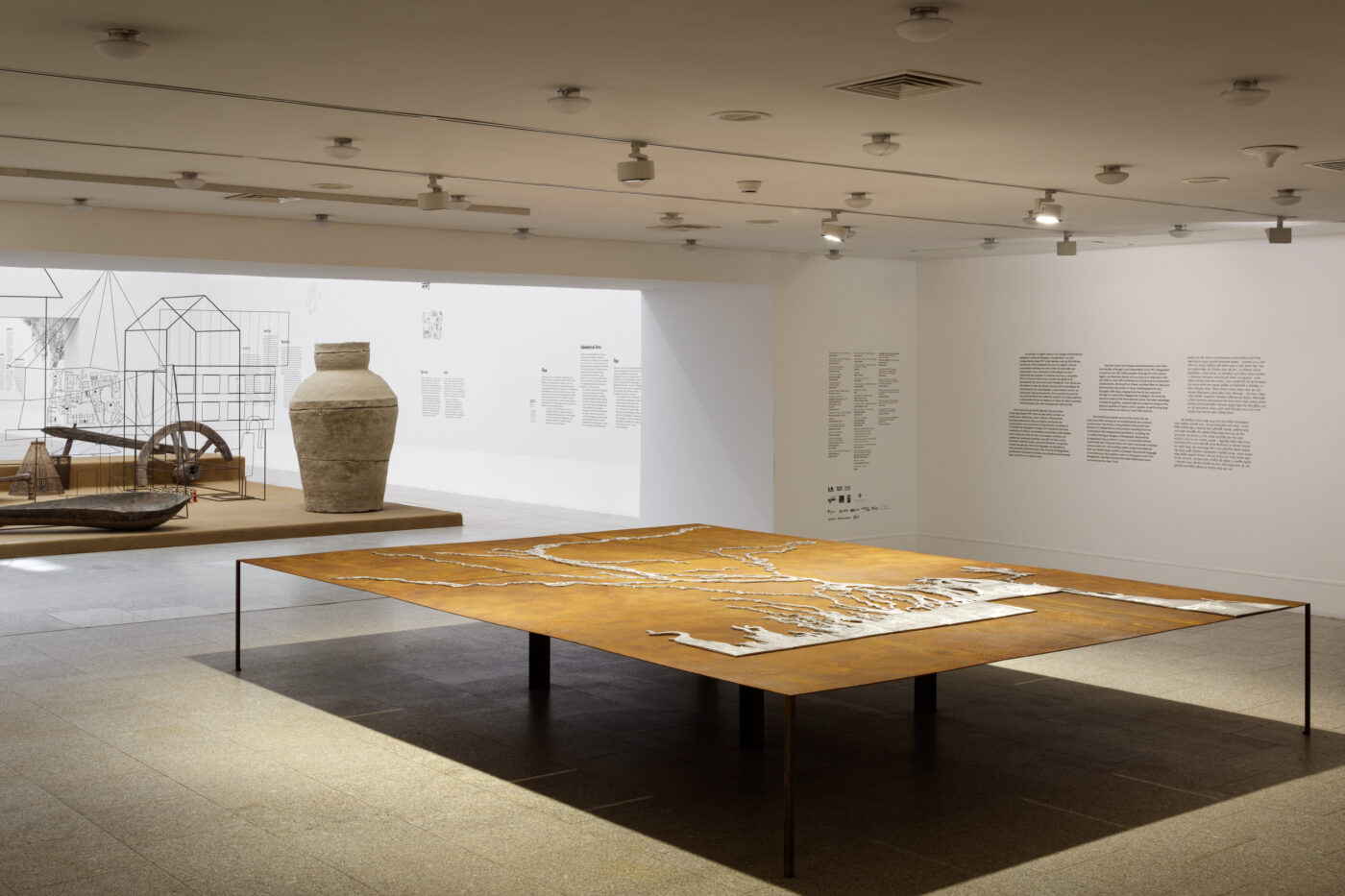
In Materials, Movements and Architecture in Bangladesh, Tabassum presents some of her works built since 1995. Among them, stand out responses to urgent problems, such as the living conditions of the 1.2 million Rohingya refugees or the transformations imposed by the rise of sea level, like a life-size model of one of the houses she designed, entirely made of bamboo, which makes the homes airy, safe and accessible.
Working in Dhaka, capital of Bangladesh, Tabassum, who has sought to establish an architectural practice that is both contemporary and rooted in place, develops ideas that range from how to use resources to community involvement strategies. In her internationally recognized work, the architect takes advantage of the characteristics of materials and explores light to qualify the physical dimensions of the space. Furthermore, and according to curator André Tavares, one of her main advantages is the ability to “carry out major transformations through small interventions”.
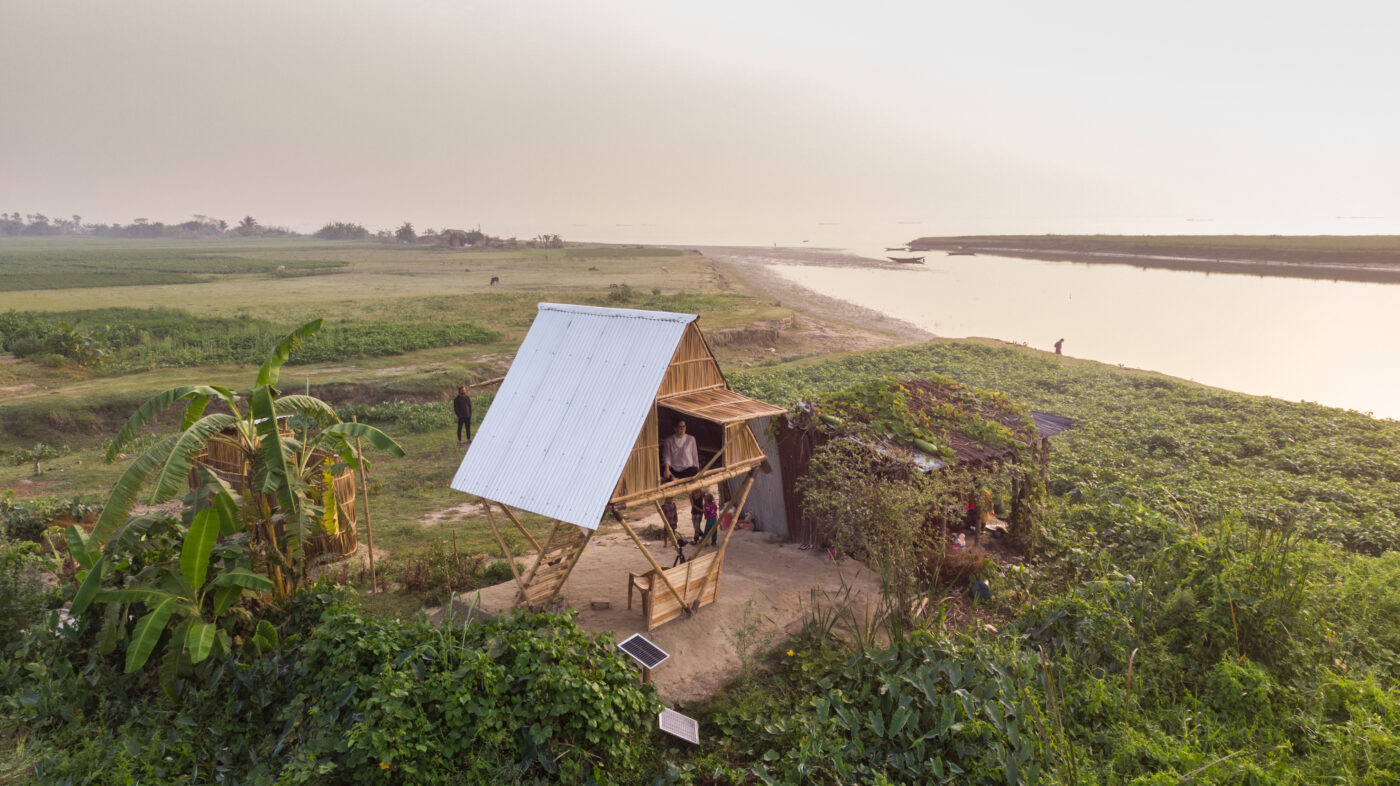
The exhibition, which is also curated by Vera Simone Bader, brings together installations, videos, photographs and everyday objects from these populations, and also aims to bring good news from Bangladesh, sharing in Europe the lively intellectual scene fueled by the flow of rivers in that country.
Materials, Movements and Architecture in Bangladesh can be visited until September 22.
Pedestrian trails and cycle paths, parks, gardens and viewpoints make Monsanto the ideal place for a day spent with family, friends or even alone. We propose a walking tour in the Park, one of many possible, which allows you to appreciate its scenic beauty and use some of its equipments.
MORNING
Mata de São Domingos de Benfica is one of the possible entrances for pedestrians or cyclists in Monsanto and a good start for a day of outdoor activity. Exploring the park with a walk along one of the walking trails is the best way to enjoy the calmest, greenest corners. The first stop is at Monsanto Interpretation Center, which serves as the reception for the Monsanto Forest Park. It has a public service area, the Documentation and Information Center, an auditorium and organizes exhibitions, workshops and visits. There you can rest before resuming the path towards Parque do Calhau which, with its large clearings, offers a maintenance circuit and a magnificent viewpoint over the east of the city. Leaving this park, and continuing south along the Water Route, you arrive at Alto da Serafina Recreational Park.
LUNCH
At Alto da Serafina Recreational Park, or Parque dos Índios (Indians Park), you can take a lunch break, using the picnic area for a picnic or, alternatively, the restaurant. Next, it is possible to explore the various recreational facilities, aimed at different age groups: playgrounds, a children’s driving school, an adventure park and the viewpoint where you can enjoy a stunning view over the city. Large lawns, trees and bushes, the presence of a small lake in Praça dos Ciprestes invite you to relax.
AFTERNOON
Continuing along the Vila Pouca – Bela Vista route, the path leads to Alvito Recreational Park, in the south. Here, there is also a varied range of recreational, sports and leisure equipments. It’s the ideal space to rest on the lawns, surrounded by woodland. The children’s playground invites the little ones to have very fun moments. There are also picnic and restaurant areas, a sports center and an amphitheater. Leaving Alvito it is possible to walk along Alameda Keil do Amaral, which allows walking and cycling and has a maintenance circuit for the elderly, a skate park, a picnic area, a dog park and a kiosk with a terrace. To end the day, there is nothing better than watching the sunset at the Keil do Amaral amphitheater, which is also a viewpoint with a unique view of the city of Lisbon.
The European Capital of Innovation award, awarded to the city at the end of 2023, legitimizes this claim. It also brings one million euros that the Unicorn Factory intends to invest in projects that put technology at the service of social innovation and the fight against exclusion. In this sector that wants to change the city, not everything is accessible, but there is room for everyone. We present four spaces where ideas are born and take shape.
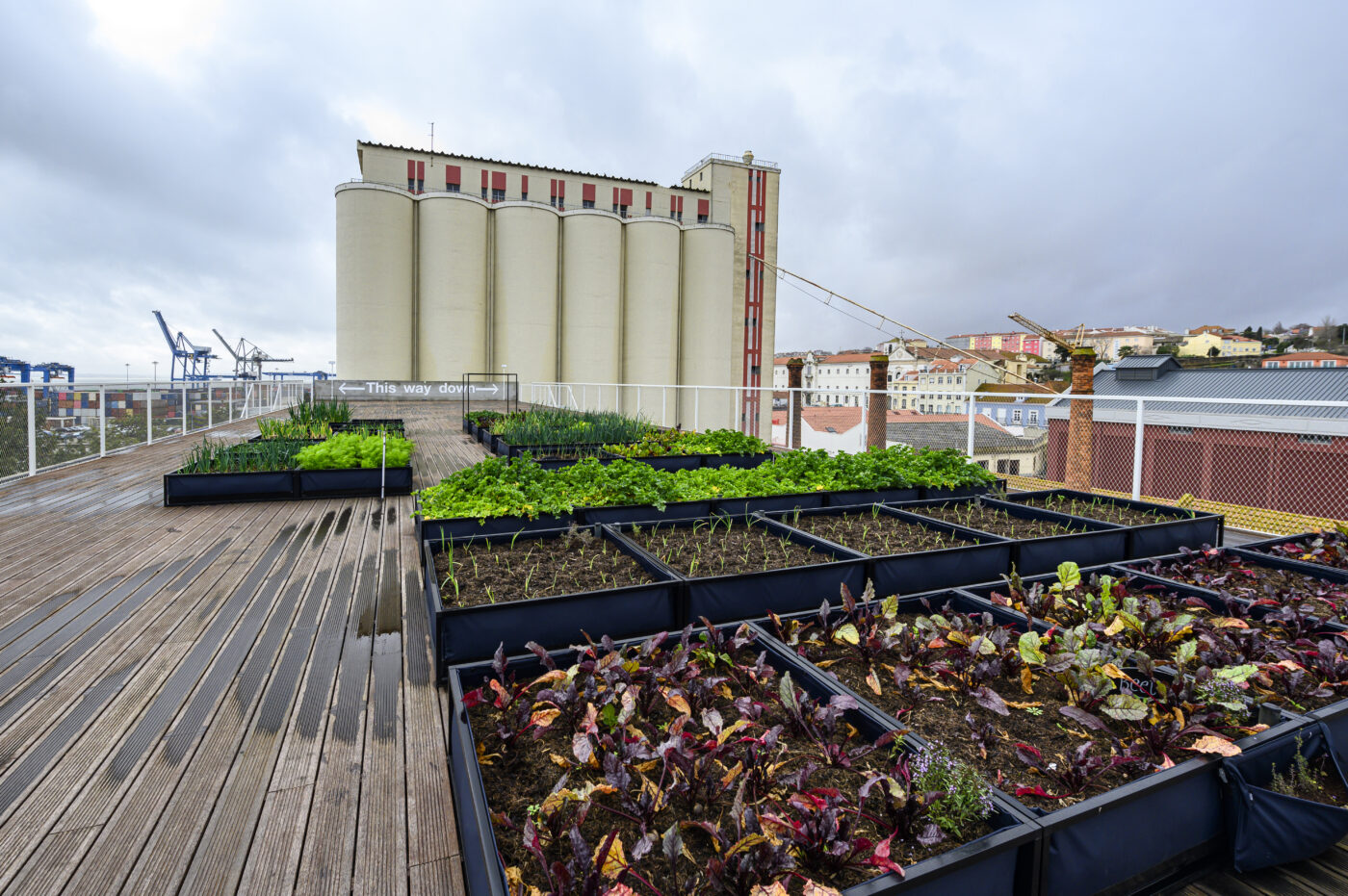
HUB CRIATIVO DO BEATO
Rua da Manutenção, 71
hubcriativobeato.com
It is one of the main addresses of innovation in Lisbon and this is, precisely, the main selection criterion for companies and projects that set up shop here. Occupying the factory area of the Former Military Maintenance, Hub Criativo do Beato will, when fully rehabilitated, be one of the largest spaces of its kind in Europe, with capacity for 3000 jobs. Of the 18 buildings in the complex, five have been restored and 15 are under contract, project manager José Mota Leal tells us.
The offices of Web Summit and Unicorn Factory are located here, a structure that, in just two years, attracted 54 new technology centers to Lisbon, coming from 23 countries. Here large multinational companies such as Sixt operate, information technologies are developed (Claranet), art is combined with technology (Interactive TechnoIogies Institute) and bacteria are transformed into protein (Microharvest). For now, the presence of services is noticeable with the Square, a restaurant and market area where national products have exclusivity.
A museum, to be installed in the old Grinding Factory, is expected to open soon, and a co-living space.
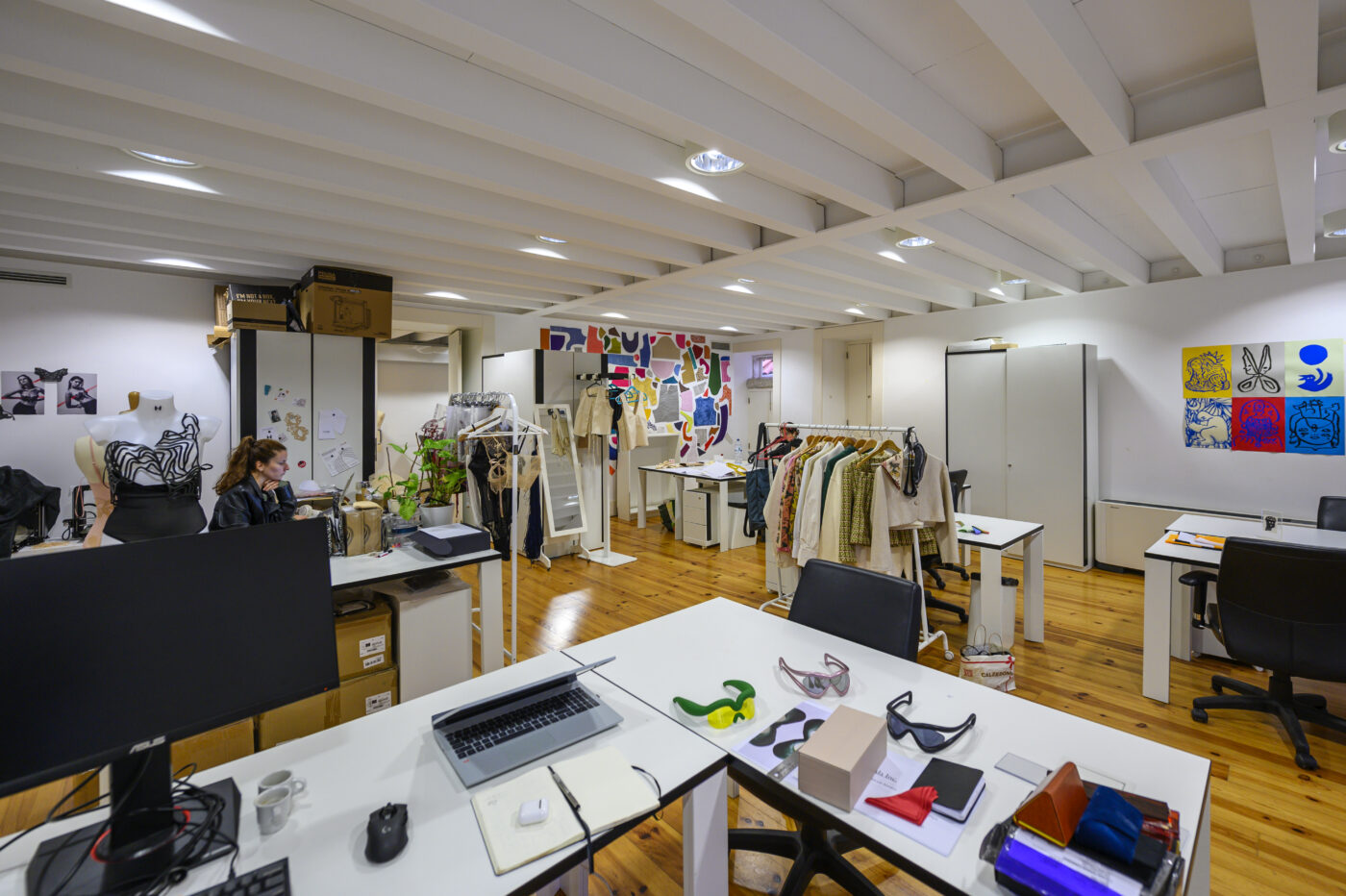
CIM – CENTRO DE INOVAÇÃO DA MOURARIA
Travessa dos Lagares, 1
facebook.com/mourariacreativehub
It was the first municipal incubator to support projects and business ideas in the areas of cultural and creative industries, such as design, media, fashion, music, tiles, jewelry, among others. In addition to providing fully equipped jobs, tailored training and consultancy, or a wide network of mentors, CIM also provides support for incubation services in terms of management, marketing, legal advice, product and service development and financing.
At the moment, the center has 13 projects in development, mainly in the areas of fashion design, communication design, design for sustainability, product or textile design, which arrive there “through calls or open applications throughout the year”, says Rosário Pedrosa, CIM’s coordinator. “After the selection is made, the projects are incubated for a maximum period of four years, during which each project can have up to four jobs,” she adds.
“Our main focus is working for residents, with workshops, masterclasses, open days, speed dating, etc., but we also work for creatives in general, as well as for the community”, highlights Rosário Pedrosa.
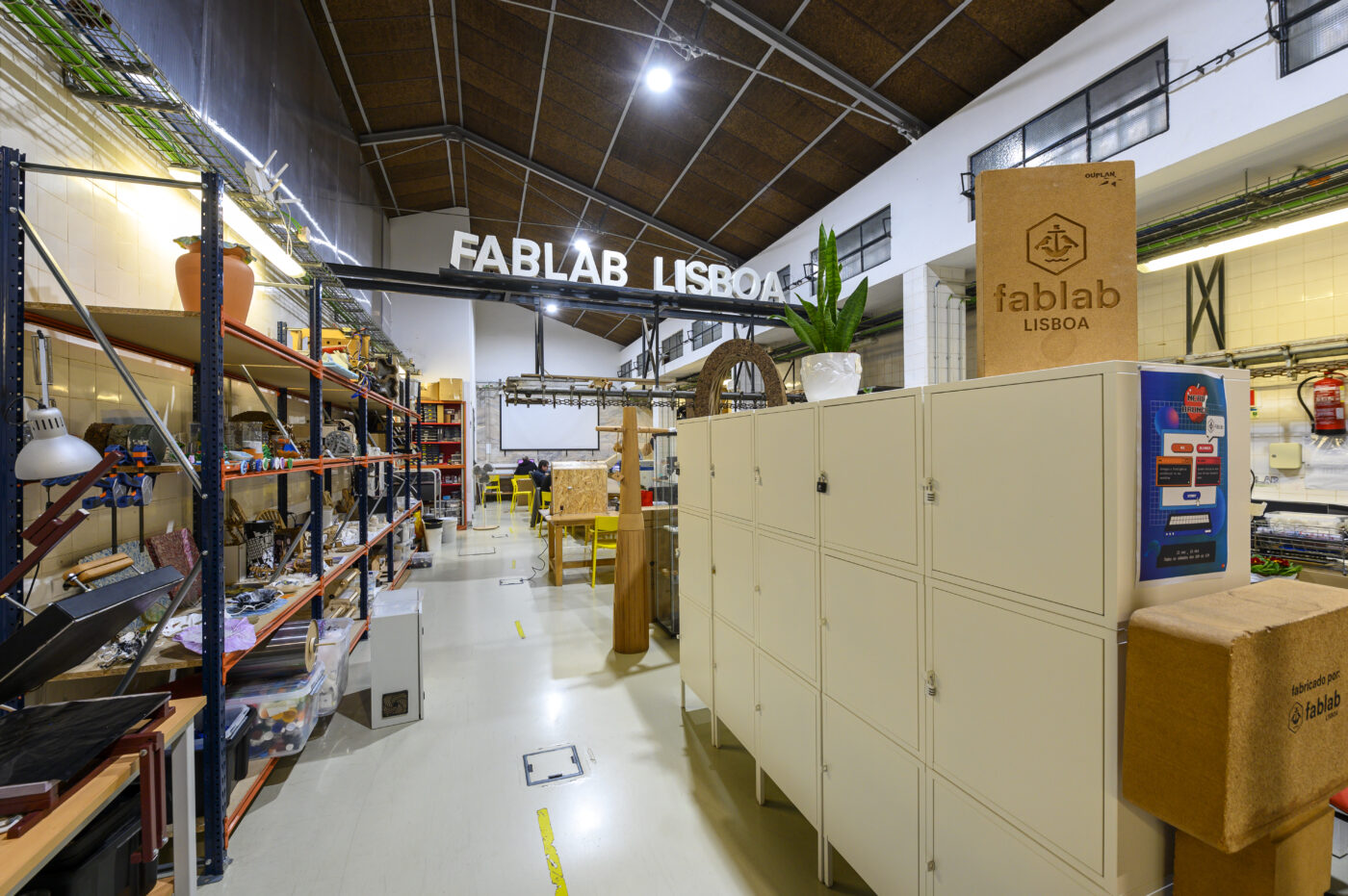
FABLAB LISBOA
Rua Maria da Fonte, 4 – Mercado do Forno do Tijolo
fablablisboa.pt
“FabLab is a place where you can do almost anything. And its main objective is training. Always has been and always will be.” It is André Martins, coordinator of the space, who guarantees it. “We do this training through the democratization of access to tools, namely digital manufacturing and prototyping tools”, he adds. Almost anything can be done there, as the primary purpose of this laboratory-workshop is to transform ideas into reality.
Open since 2013, it operates in Mercado do Forno do Tijolo and offers accessible and safe industrial equipment, such as small and large milling machines, laser cutting and vinyl cutting machines, 3D printers, an electronics bench, computers and their respective computer programming tools supported by CAD and CAM software.
Being accessible to citizens, by appointment, FabLab promotes open days on Mondays and Tuesdays, where the use of the machines is free, always under the watchful eye of the responsible team. This space for sharing knowledge and experiences is, according to André Martins, “increasingly a laboratory that has an impact on the city”.
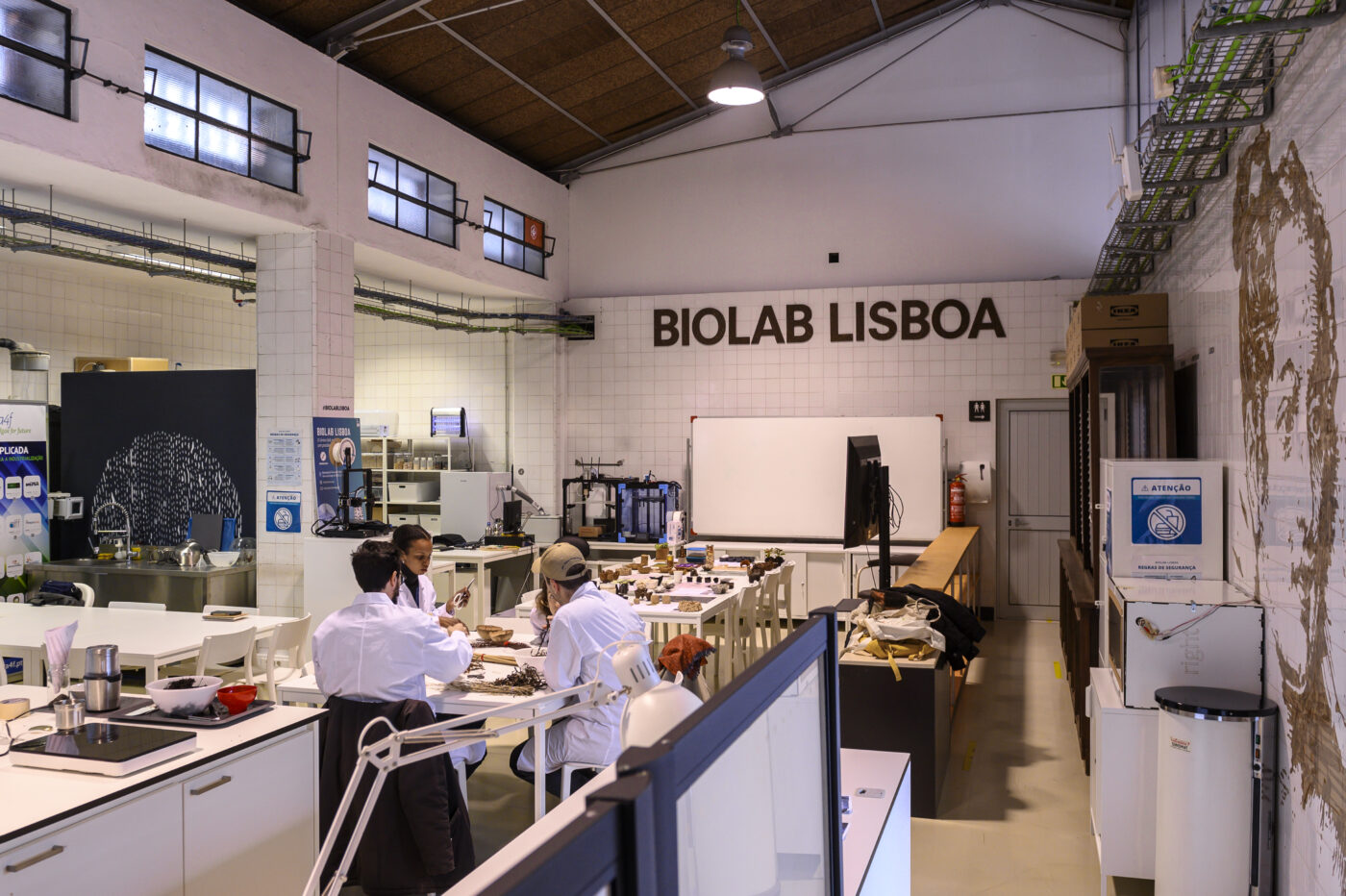
BIOLAB LISBOA
Rua Maria da Fonte, 4 – Mercado do Forno do Tijolo
biolablisboa.pt
It was born in 2022 as a spin-off of FabLab and with sustainability in its DNA. It is a research, experimentation and prototyping laboratory, whose operation is ensured, in partnership, by the Lisbon City Council and the Faculty of Sciences of the University of Lisbon. Open to all citizens, it prioritizes ideas and projects that bring added value to the city, as Rafael Calado, the coordinator of the space, tells us.
Access to the laboratory is by invitation, spontaneous application or during open days that take place every Thursday. You don’t need to be a scientist or have knowledge of science, as Calado says, recalling the case of a Repair Café regular who asked for help to create soap packaging from almond shells. However, many researchers from various areas of knowledge seek out BioLab to develop their projects.
Currently, and at the proposal of the team that runs this space, a group of designers is experimenting with algae in prototypes of utilitarian objects. The laboratory has 3 levels of biological safety and an ethics charter that defines the limits of what can and cannot be done here.
Maria Lamas (1893–1983) was perhaps one of the most notable Portuguese women of the 20th century. Although a certain memory persists of her political affirmation and action as a communist militant during the Estado Novo and her “self-exile” in Paris, the truth is that her literary and journalistic work is practically forgotten, with very few of her books available in the market. Even less remembered is her side as a photographer, impressive indeed, as Jorge Calado says, “due to such a large number of masterpieces” in such a short collection.
“Extraordinarily modern”, Maria Lamas’ photographs had never been exhibited in Portugal, and are now the focus of this exhibition. As Mulheres de Maria Lamas brings together a selection of 65 of the photographs that she captured, essentially, in rural areas in the center of the country.
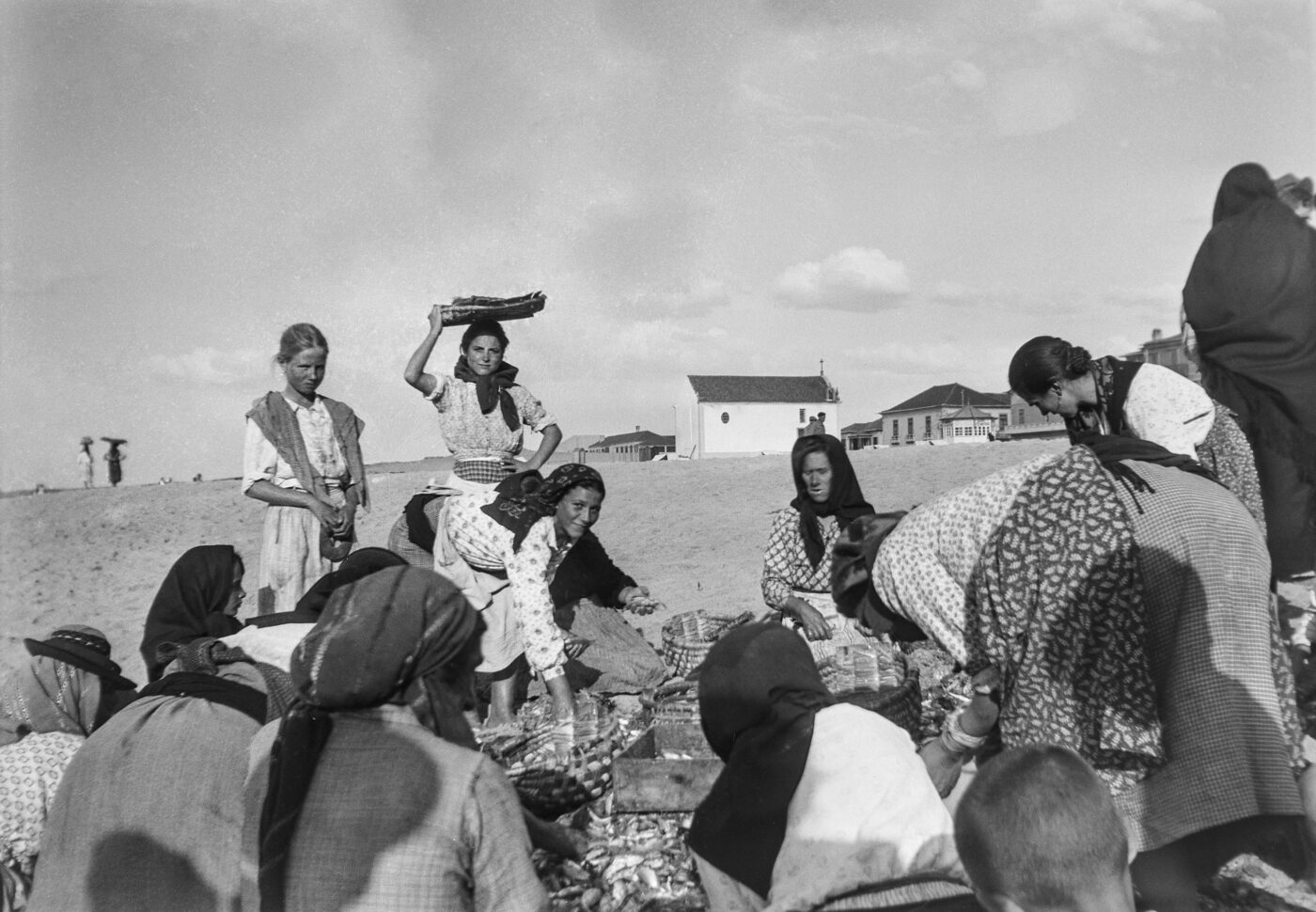
Exemplary testimonies of the condition of Portuguese women during the Salazar dictatorship, mostly vintage samples (of the time), small in size, but also some enlargements, the exhibition also displays evidence from the time of other photographers, such as Adelino Lyon de Castro, Artur Pastor or Maria T. Mendonça, included, alongside those by Lamas, in As Mulheres do Meu País, a work published for the first time in installments between 1948 and 1950.
Despite the list of illustrious photographers featured in the book, Lamas’ photographs stand out for their truth and vivacity, constituting in themselves an absolutely unique work in the history of Portuguese photography. Surprisingly, she became a photographer almost accidentally, imbued with her spirit as a militant fighter and opponent of the regime. “She had never taken photographs and used the most basic camera available, the Kodak box model, which did not allow for the possibility of focusing”, recalls Calado.
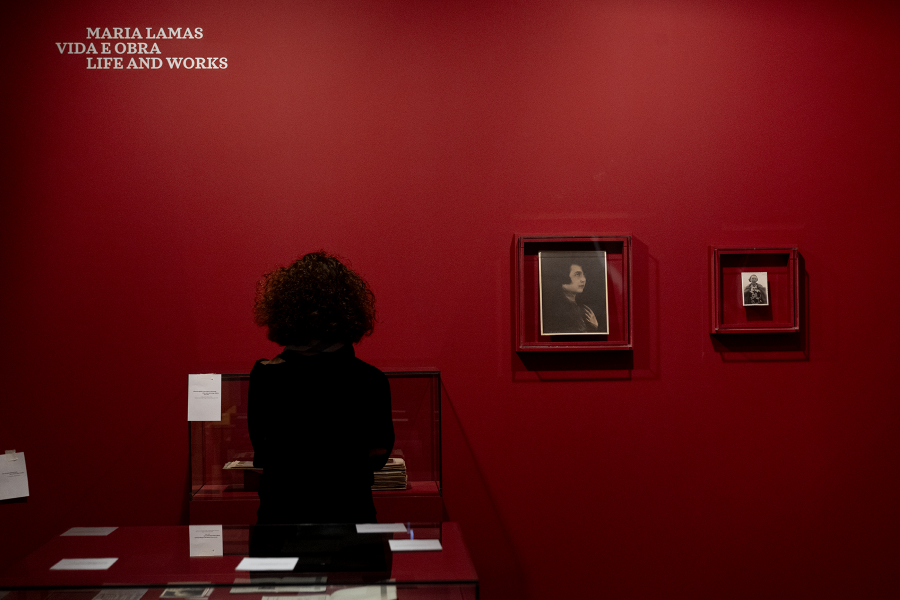
In addition to the images, personal objects of Maria Lamas are also on display, as well as her portrait painted by Júlio Pomar, in 1954, and the plaster bust sculpted, in 1929, by Júlio de Sousa. The section dedicated to literary and journalistic works includes copies of first editions of the author’s fundamental works, namely in the field of children’s literature, poetry and fiction, translations of classics of youth literature and some journalism.
Although he is here in the role of the curator, professor Jorge Calado does not hide the emotional side with which he designed this exhibition. For him, Maria Lamas is a “heroine”, “the most notable Portuguese woman of the 20th century”, never failing to highlight “her genius” in her work and life. “I have admired her since I was a boy. And, as I grew up, she became an even greater hero, largely due to her opposition to the dictatorship”, he says, adding that, “on the other hand, I also admire her a lot for having been a generous and loving woman in her relationships, not only with family but also with friends. She was an admirable person, always ready to help others.”
Therefore, the exhibition seeks to “reveal a relatively unknown side of Lamas, as well as honor the woman she was”. “Maria Lamas fought to liberate women, not as women, but as citizens and as human beings. It wasn’t about women’s rights, it was about human rights,” he adds. The Women of Maria Lamas is open to the public until May 28.
When São Luiz reopens in September, after the summer holidays, attention will focus on the return to the municipal theater of Brazilian playwright, director and director Christiane Jatahy.
Revealed in Portugal at the beginning of the century, Jatahy has been a constant presence in the European theatrical circuit, highlighting the status that Lisbon attributed to him, in 2018, as Artist in the City. Noted for his versions of the classics of Strindberg and Chekhov, Jatahy stands out in the particularly inventive, and even radical and subversive way, as it combines the languages of theater and cinema.
Recently distinguished in Venice with the Golden Lion, Jatahy presents The Now That Takes Time: Our Odyssey II, successor of Itaca (2018), a show premiered precisely in Teatro São Luiz, and which follows the very particular look of the creator on The Odyssey of Homer.
Regarding disturbing and creative forms of dialogue between theater and cinema, on April 6 and 7 next year, São Luiz presents, for the first time, a creation of the most noteable Katie Mitchell. In a co-production with the Berlin Schaubühne, Virginia Woolf’s chilling classic Orlando is translated into a “live cinema” version where all of Mitchell’s virtuosity is shaped in the technical domain and in the scene, in what will most likely be one of the most anticipated moments of the theatrical season in Lisbon.
Still on the international level, another return to Lisbon: Pippo Delbonno. The Italian director was challenged by Teatro São Luiz to create a show about the city of Tagus, while exploring its connection with Africa, especially Cape Verde and Angola.
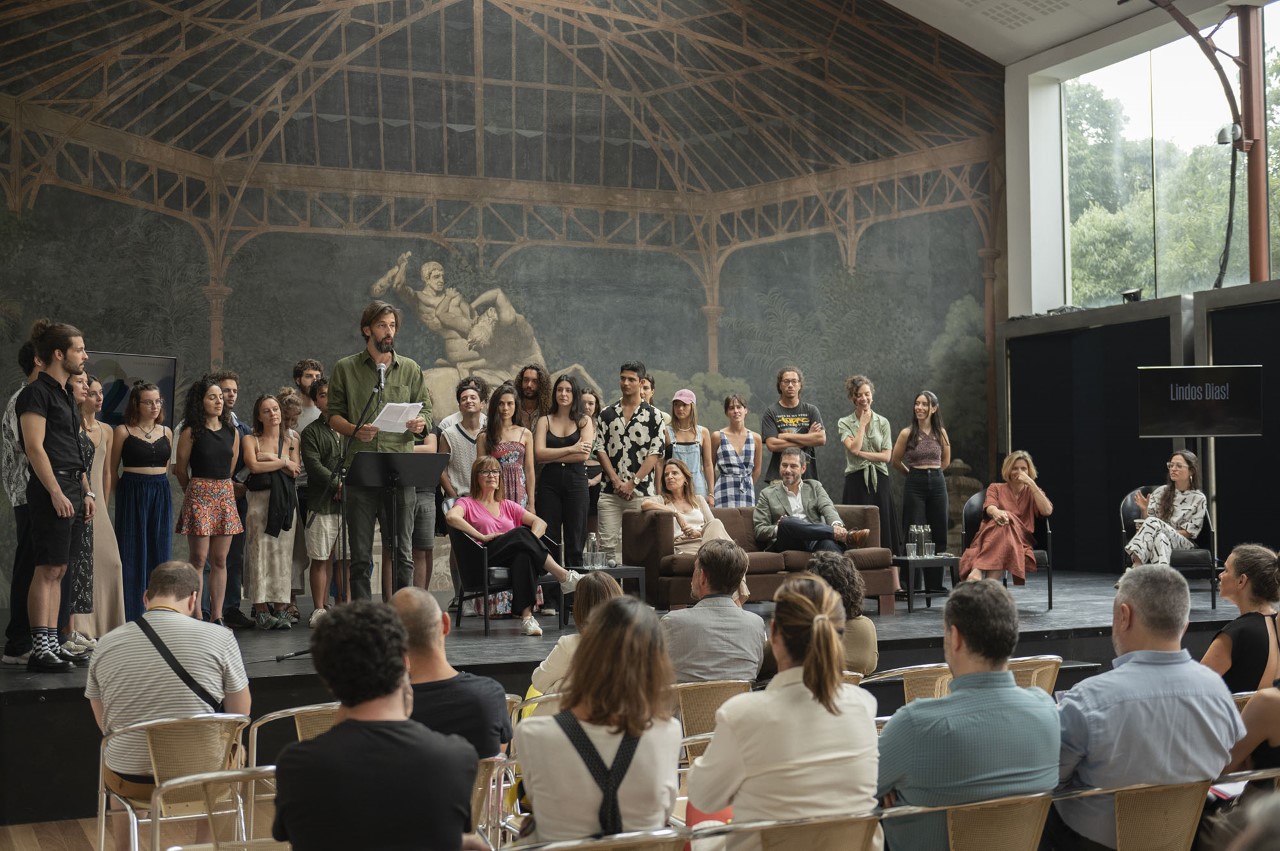
It was one of the priorities of the current artistic direction of São Luiz to seek to give, over the years, a growing role to female creators. This season, Beatriz Batarda revisits a musical comedy she directed in the main theater room in 2011, with texts by Karl Valentin. More than a decade later, the director presents, with the same cast (Bruno Nogueira and Luísa Cruz, who now joins Rita Cabaço), Another Bizarre Salad (February 2023).
Other featured creators are Cucha Carvalheiro, with the premiere of the original of his own Fonte da Raiva, which she owns alongside a luxury cast, where they score Filomena Cautela, Manuela Couto or Sandra Faleiro; Olga Roriz, who choreographs an emblematic play by the German playwright Peter Handke, The time when we knew nothing of each other; and Rita Lello in Isadora, Fala!, a solo dedicated to the American dancer, forerunner of modern ballet, Isadora Duncan.
The full program can be found on the São Luiz Teatro Municipal website.
It was the roaring ’20s. Europe was leaving behind the war and the Spanish flu pandemic, incoming a period of euphoria. In The Lisbon of the First Republic, and although it was a peripheral capital, artistic and cultural life began to swarm with the fashions arrived from major cities such as Paris, London and New York.
But if Lisbon also longed to dance the charleston and the foxtrot, the popular taste continued seduced by carousels and wax figures, pim pam pum stalls and target shooting, tascas, displays of master animals and “freaks” of fair, animators and saltimbancos.
It was to seek to recreate the atmosphere of the traditional popular fairs that have been swarming the city since the 19th century, adding it to the breath of sophistication of the times, which, at the back of the Lima Mayer Palace (now the Consulate of Spain in Lisbon), more specifically in its garden, the so-called Sociedade Avenida Parque, led by theatrical entrepreneur Luís Galhardo, inaugurated, on June 15, 1922, the Parque Avenue, or Parque Mayer fair.
The triumph of Revista à portuguesa
Those days, teatro de Revista, or Revista à portuguesa, was a theatrical genre of markedly popular taste, with lots of music and several comic scenes, and everybody loves it. On July 1st, 100 years ago, Parque Mayer saw the first of its theaters, the Maria Vitória Theater, open its doors, with Lua Nova [New Moon].
Interestingly, the first of the theaters to open was the one that, in Parque Mayer, almost uninterruptedly remained in operation over these 100 years, even though it was beset in 1986 by a violent fire. Currently, and at the initiative of Hélder Freire Costa, Teatro Maria Vitória remains the last bulwark of the magazine theater in Lisbon, debuting, year after year, a new show of Revista à portuguesa.
On July 8, 1926, in Parque Mayer opened a new theater, the Teatro Variedades [Varieties], with the premiere of the show of Revista Pó de Arroz. Alongside the stalls of food and drinks, fado and fashion dances, Parque Mayer was increasingly the place of excellence of fun and bohemia in the city of Lisbon.
Then, and always under the aegis of Revista à portuguesa, a genre that so caryby by Estado Novo became a school of opposition and resistance to political censorship and customs, opened the Teatro Capitólio (built in 1931 and rehabilitated and reopened in 2016) and the Teatro ABC Theater (founded in 1956, demolished in the 1990s and transformed into a car park).
The desire for experimentation, taking risk and “not even being afraid to fail” is felt at every moment of Arena, secondcreation of the collective Outro, directed by João Leão and Sílvio Vieira, the latter author of the show. Explain what is going on there, especially when said arena is in an old car workshop located in the heart of one of the residential neighborhoods of the parish of Arroios, it would be like unraveling part of the mystery that surrounds this scenic adventure, where nothing is predictable or neglects the effect of surprise.
However, without pointing out a path, we can reveal the existence of six creatures that move as an organic unit (which the author called Jan), although each plays a role in the collective. Routinely, they undertake a ritual movement, until one day, it will be shaken when, from inside water (literally), an alien character emerges in an astronaut suit.
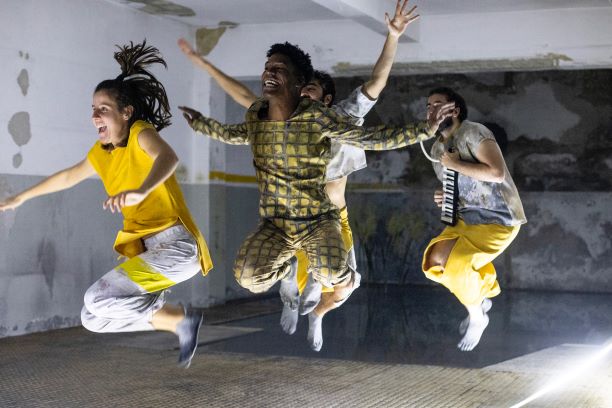
In arena’s genesis was the premise that it would be a theatre show without a word. “When two years ago, even before the pandemic, we started working on the project it was thought that the pillar would be the translation of music into the theatrical scene. As the choreographer who translates music into gestures, here, the goal was to translate it into theatricality, that is, in images, situations, characters”, explains Sílvio Vieira.
Throughout the creative process, it was precisely from the music that the actors improvised, birthing the essentials of Arena’s situations. But, contrary to the scheduled, something essential happened: the show would not happen in the black box of a conventional stage, but in a garage. “When we got here, I asked the actors to look at the space, choose a corner and try to explore it,” recalls the author, stressing how the architecture of this old abandoned workshop, at 21A Rua Carlos José Barreiros, “entered the dramaturgy of the show itself, being impossible to transport what happens here to another place.”

Without imposing a narrative line or, as the author points out, “any political and ideological concept”, Arena is revealed as an artistic object of full freedom, “where what has been valued is experimentation and the search for beauty, or a certain poetry. As the dipositive is opened, any viewer can read as they see fit. And that’s something I like about a show,” Vieira recalls.
This scenic adventure that combines with great ingenuity and irreverence movement, sound, light and an imaginary whole claimed of silent cinema and the great names of comedy, such as Charlie Chaplin, Buster Keaton or Harold Lloyd, is starring young actors Anabela Ribeiro, André Cabral, Catarina Rabaça, Inês Realista, Miguel Galamba, Miguel Ponte and Pedro Peças. In the course of the cultural association Outro, born in 2018, Arena is the successor of As trees let die the mostbeautiful branches, a show also written by Sílvio Vieira, premiered in 2020 at the Temps d’Images Festival.
1 – Monteiro-Mor Botanical Park
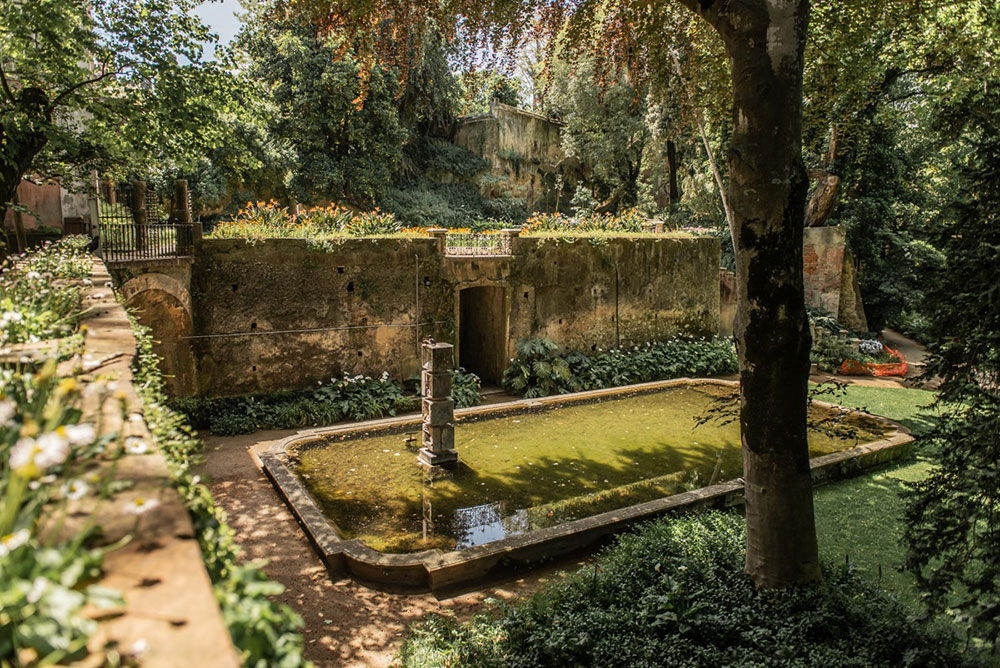
The park has a vast collection of botanical species. Here is the first araucaria heterophylla known in mainland Portugal. Among the existing fauna, birds and a colony of bats are worth noting.
http://www.museudotraje.gov.pt
Largo Júlio de Castilho – Lumiar, 1600-483 Lisbon
Tel. +351 217 543 920 (box office)
Museum and Botanical Park Hours: Tuesday to Sunday, 10 am to 1 pm and from 2 pm to 6 pm
Closed to the public: Monday, January 1, Easter Sunday, May 1, municipal holiday (June 13), 24 and 25 December.
2 – Calouste Gulbenkian Foundation Garden
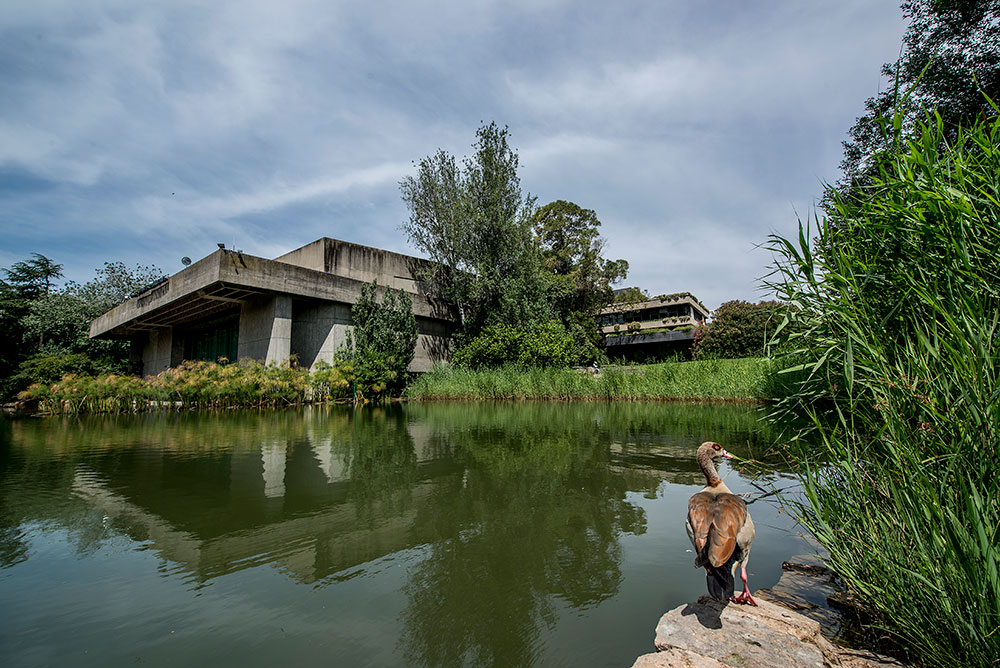
Built in the 60s of the twentieth century, it is one of the most representative gardens of modernism in Portugal. Inspired by the Portuguese landscape, its ecological and cultural dimension, it has undergone transformations over time. It developed into a dense and varied forest, including a lake and reflecting, as a whole, an idea of paradise. Several trails are proposed: from light and shade, from the lake, from the waterfront, from scents and views.
https://gulbenkian.pt/jardim/
Av. de Berna 45A, 1067-001 Lisbon
Phone: +351 217 823 000
Opening hours: Open every day from sunrise to sunset.
3 – Eduardo VII Park/Cold Greenhouse
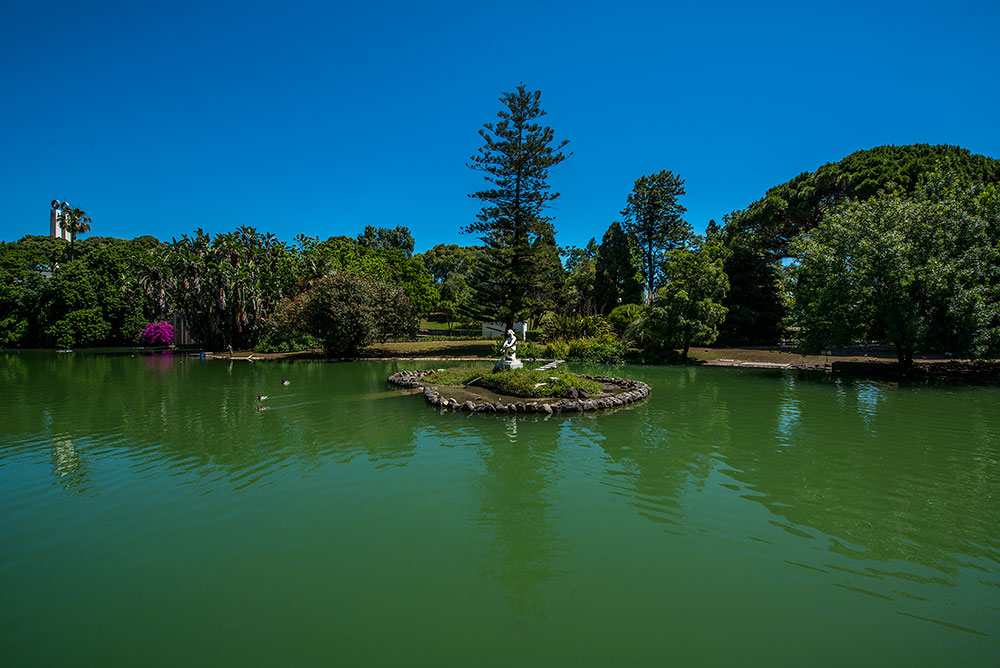
Built in the 1st half of the XX century, is the largest park in the center of Lisbon. It has a central strip, covered with grass and Buxus, bordered by walks and green areas. To the northwest of the park is the Cold Greenhouse and, to the east, the Carlos Lopes Pavilion. To the north is a viewpoint with a wide view over Lisbon, the Tagus River, and the other bank.
https://informacoeseservicos.lisboa.pt/contactos/diretorio-da-cidade/parque-eduardo-vii
Eduardo VII Park. 1070-051 Lisbon
Park hours: 24 hours
Cold Greenhouse: Summer, from 10 am to 7 pm.
Closes on January 1, May 1 and December 25
http://estufafria.cm-lisboa.pt/
Tel. +351 218 170 996
4 – Lisbon Botanical Garden
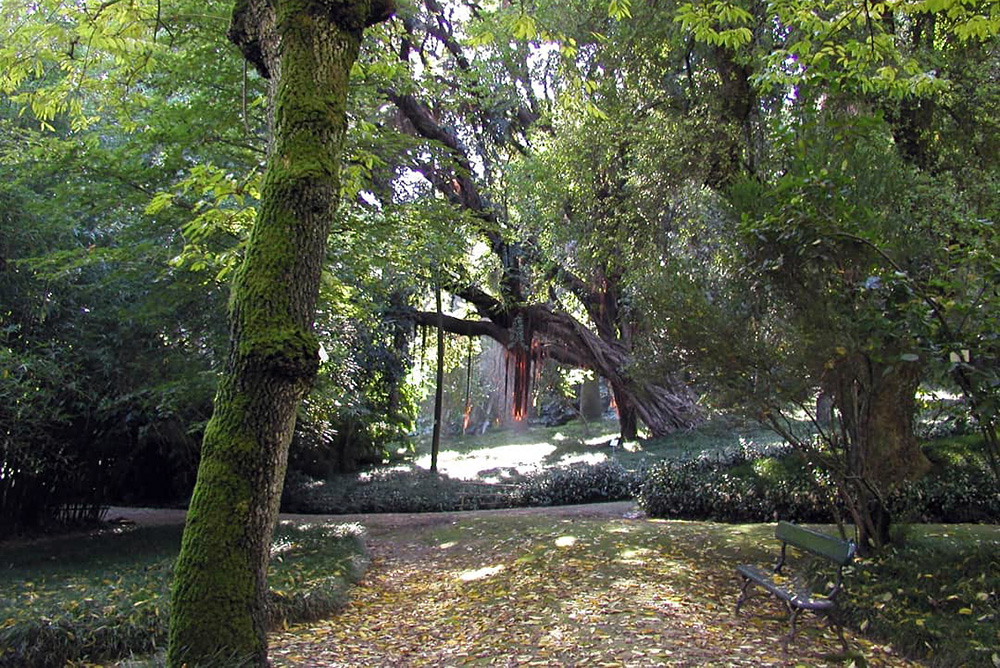
Scientific garden, opened in 1878, is part of the National Museum of Natural History and Science. Among others, it has several tropical species natural from New Zealand, Australia, China, Japan and South America, a wide variety of palm trees originating from all continents, and cycads, currently rare and one of the ex-libris of the Garden.
http://www.museus.ulisboa.pt/jardim-botanico
Rua da Escola Politécnica, 58, 1250-102 Lisbon
Tel. +351 213 921 800
Schedule: Every day except January 1 and December 25.
Winter: 10 a.m. to 5 pm | Summer: 10 am to 8 pm
5 – Jardim do Príncipe Real
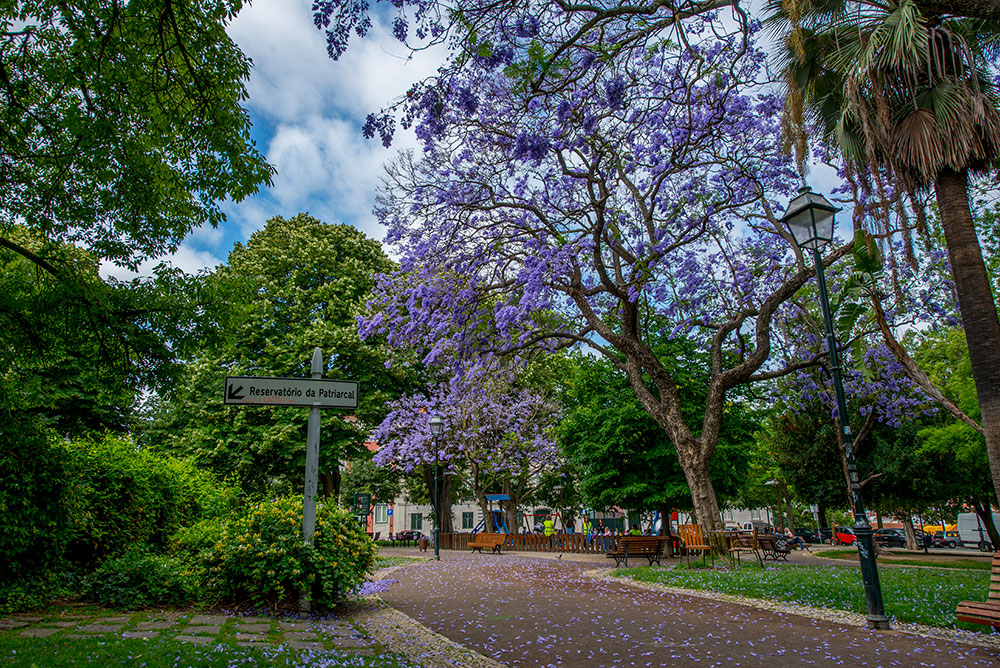
A romantic and English-inspired garden, it was built in the mid-19th century, around an ectogonal lake. It has several elements of stactand of the various tree species existing in the garden, stands out the large and secular cedar-of-Buçaco with more than 20 meters. The space has several equipment, including kiosks, terrace and playground. Underground is the Patriarchal Reservoir, belonging to the Water Museum.
https://informacoeseservicos.lisboa.pt/contactos/diretorio-da-cidade/jardim-franca-borges
Praça do Príncipe Real, 1250-096 Lisbon
Time: 24 hours
6 – Jardim da Estrela
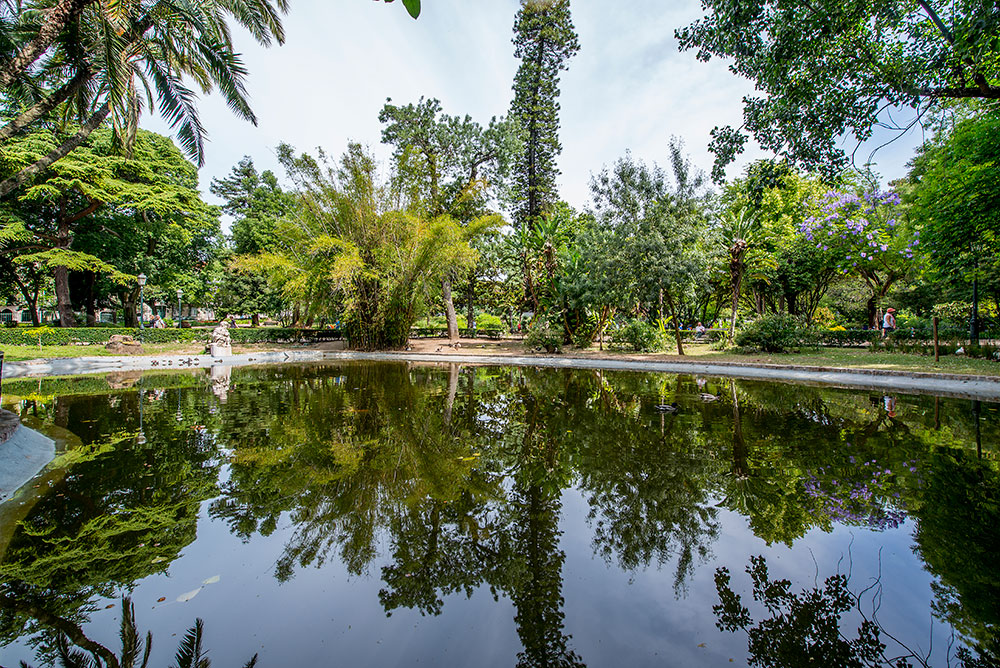
The Guerra Junqueiro Garden, known as Jardim da Estrela, was inaugurated in 1852. Public garden, delimited by railing, was built in the style of English gardens, of romantic inspiration. Inhabited by diverse fauna, the garden has several exotic plants among its diverse vegetation, lakes, waterfalls, statuary, a viewpoint, and a bandstand among other buildings.
https://informacoeseservicos.lisboa.pt/contactos/diretorio-da-cidade/jardim-guerra-junqueiro
Praça da Estrela, 1200-667 Lisbon
Time: Every day, from 7 am to 12 pm
7 – Tropical Botanical Garden
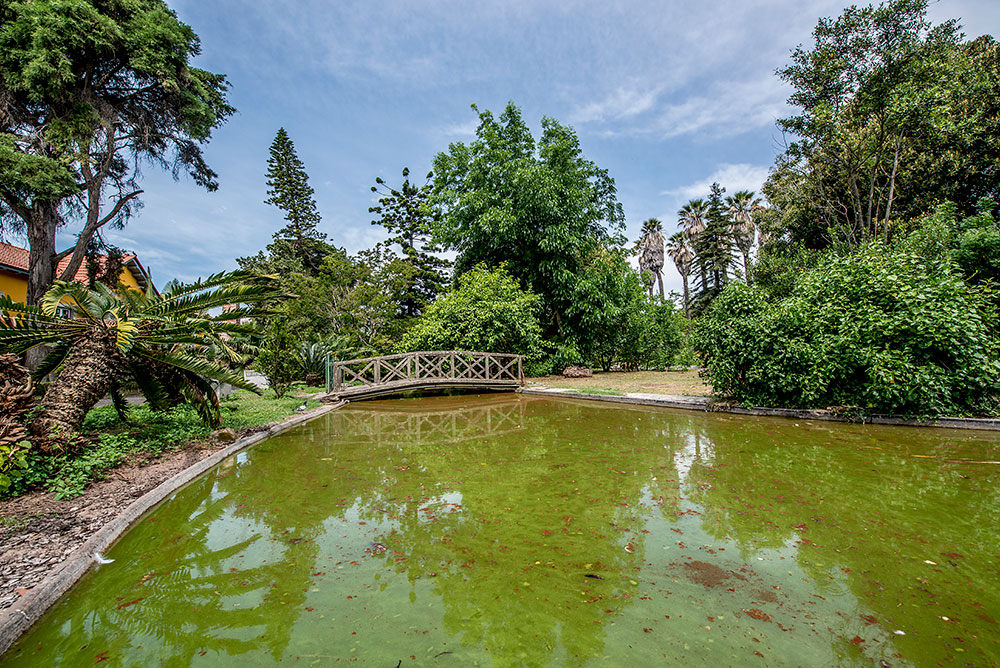
This scientific garden was created in 1906 to support the teaching of tropical agronomy. It has relevant botanical collections with about 600 species, mainly of tropical and subtropical origin, especially rare species such as cycas and encephalartos. From the built heritage dating from the 17th century to the 20th century, the Casa do Fresco, the Calheta Palace and the Main Greenhouse are worth highlighting.
https://museus.ulisboa.pt/jardim-botanico-tropical
Largo dos Jerónimos, 1400-209 Lisbon
Tel. +351 213 921 808
Schedule: Every day except January 1 and December 25.
Winter: 10 a.m. to 5 pm | Summer: 10 am to 8 pm
8 – Ajuda Botanical Garden
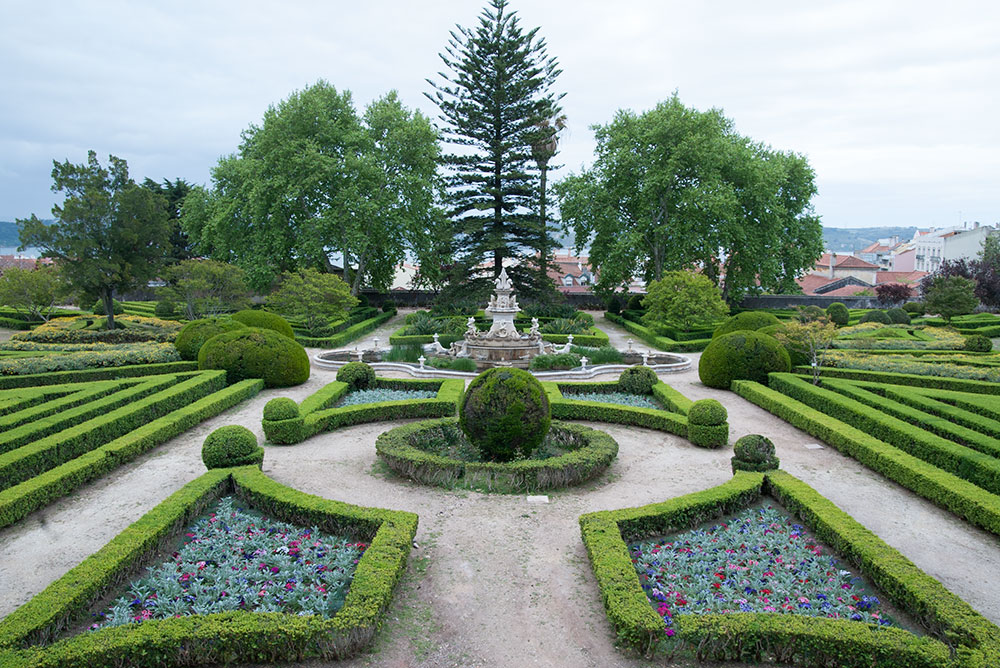
Founded in 1768, it is the first Botanical Garden in Portugal. The architecture of the garden is of Renaissance model and the ornaments are of baroque influence. Organized on two terraces, it overlooks the Tagus River and is inhabited by peacocks and other birds. It has more than 1600 plants, including a dragon tree with more than 400 years.
http://www.isa.ulisboa.pt/jba
Calçada da Ajuda s/n, 1300-011 Lisbon
Tel. +351 213 653 157
Schedule: Weekdays, from 10 am to 5 pm. Weekends and public holidays from 10 am to 6 pm
Daylight saving time: Weekdays from 10 am to 6 pm. Weekends and holidays from 10 am to 8 pm
Closes on January 1 and December 25
Create “a place of love” to claim what is human, in a time of dehumanization, even more accelerated by a pandemic. This is the purpose of the third edition of BoCA,which begins in Lisbon, Almada and Faro in early September, extending until October 17.
More than a festival, this year 2021, BoCA seeks, in the words of artistic director John Romão, to keep “alive its mission in support of new languages, privilegiem the spaces ‘between’ – for example, between the performative and the visual – new commissions to Portuguese and foreign artists, in trans dialogue (therefore, transgender in all its meanings) implementing projects that propose a new awareness and models between artistic practices and sustainability.”
Goal to be realized through artistic projects signed by dozens of notable creators who seek to look at the world and question established narratives. And, taking into account “a program that combines different rhythms of projects and relationships with artists and institutions, relying on a transition of production and creation processes, integrated, plural and sustainable”, the biennial reinforces the presence of “short-term projects that reinforce the artistic and ethical commitment to artists and production structures , creations that extend in time and space through greater commitment to the short ephemerality of theater and performative, sustainable and long-term relationships with artists and projects, deepening of reflections and long-term processes that combine performivity, visuality, activism and neuroscience, a focus on the direct relationship and representativeness of local communities , artistic, associative and diverse sectors, whose active participation is involved in the creative development of projects to also start an interrelational ecosystem between art, sustainability and science through the project The Defense of Nature.”
This last purpose will be developed in what is a ten-year project, which, in a first stage, proposes, by December this year, to sponsor the planting of 7,000 trees of indigenous species, through the will of 7,000 artists/citizens. From an artistic point of view, this project already includes in this edition a series of performative actions in natural spaces of the three host cities entitled Quero Ver das Montanhas. Curated by Delfim Sardo and Sílvia Gomes, the various performances are starring artists such as Sara Bichão, Diana Policarpo, Dayana Lucas, Gustavo Sumpta, Gustavo Ciríaco, Musa Paradisiaca and the collective Berru.
Lisbon programming
As usual, boca does not settle in Lisbon, and if in previous editions it has “decentralized” the cities of the north of the country, this year crosses the Tagus, settles in Almada, and goes south, to the Algarve, to the city of Faro.
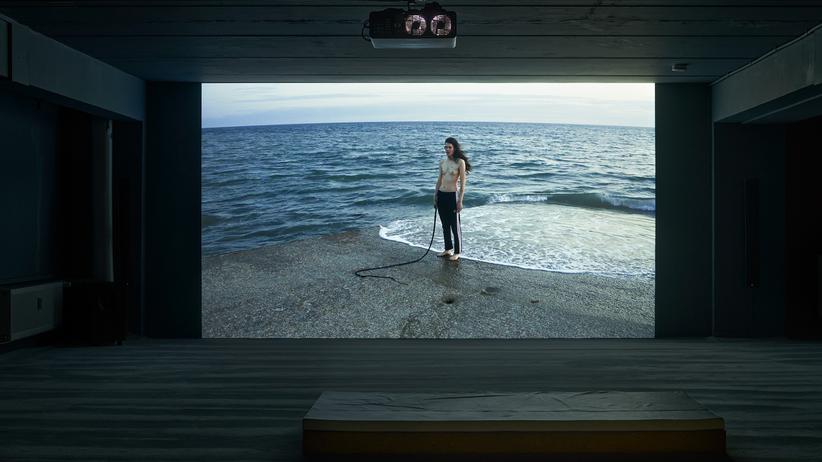
Throughout the capital, the start of the biennial begins with the first large-scale installation of Grada Kilomba, which extends along the river for 32 meters long, in the Coal Square of MAAT. Barco/The Boat proposes to launch “a new collective narrative in this same public space, built from the history of dehumanization, violence and genocide of African and indigenous peoples.”
Meanwhile, at the National Museum of Ancient Art, German artist Anne Imhof presents the video installation Untitled (Wave) in the Alberta Chapel, a place previously inhabited only by women in seclusion; and at Palácio Pimenta, rapper Capicua debuts as a theater author and directs actor Tiago Barbosa in The Junk,“an emotional dissertation that departs from the story of a man who stands alone, in the long months of confinement, surrounded by inert matter, rubble and memories.”
Regarding theater premieres, the BoCA brought to Lisbon the renowned American filmmaker Gus Van Sant, who presents, from September 23, in the Garrett Room of the Teatro Nacional D. Maria II, his first stage creation with a fully Portuguese artistic team. Andy is a musical that “reconstructs the past of an Andy Warhol in early career, through a fictional narrative constructed from real facts and memories, but also from imagination.”
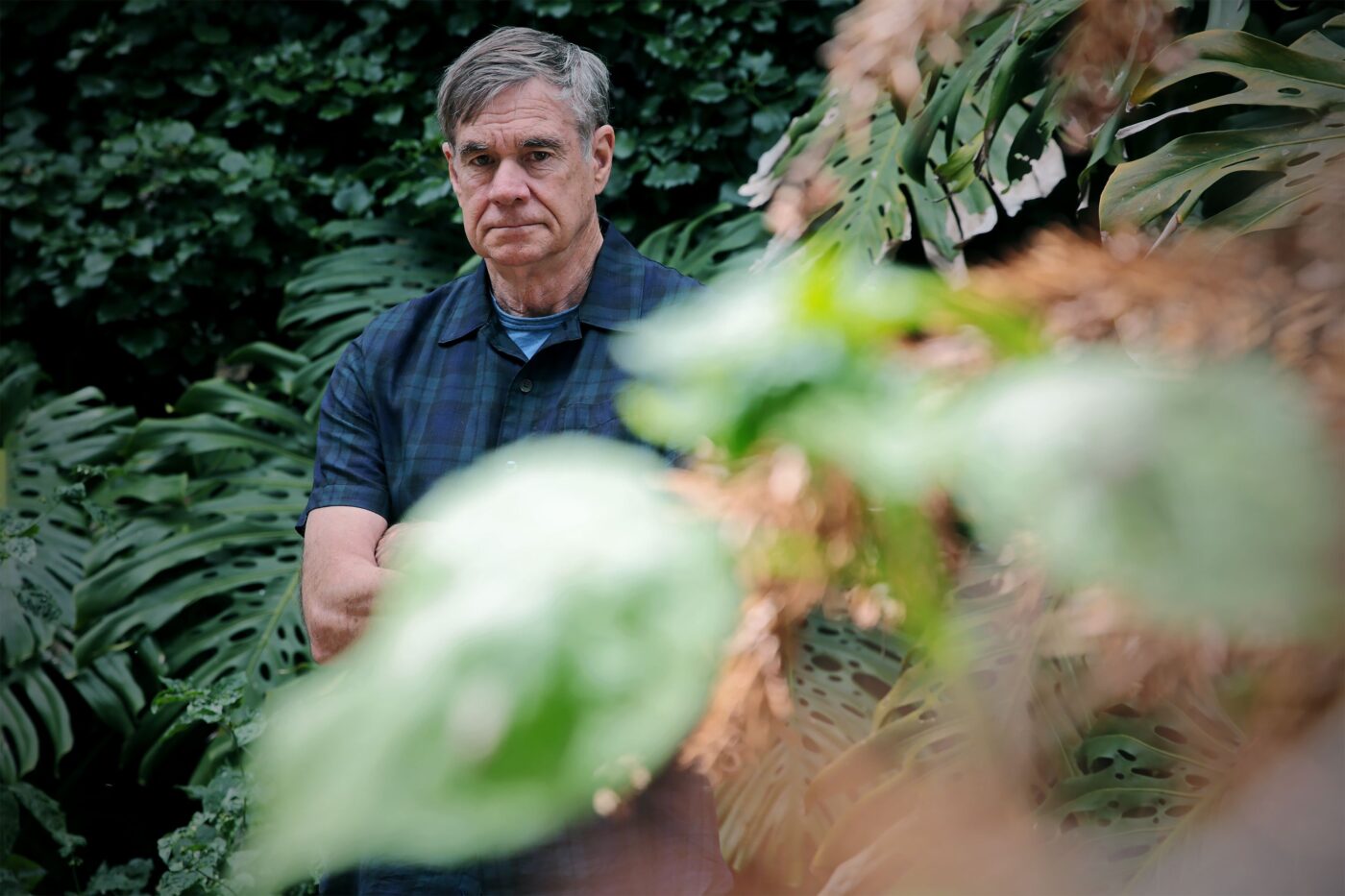
Lisbon will also be the “stage” of The Third Reich, a performative video installation of what is one of the biggest names in European theater, the Italian Romeo Castellucci (National Coach Museum, 9 and 10 September); performance/installation Overlapses, Riddles & Spells, by Andreia Santana (CCB, September 9-12); of the dream videos of Polish Agnieszka Polska present in The New Sun (Patriarchal Reserve, September 13 to October 17) – she will also be at Casa da Cerca in Almada with another video installation, I Am the Mouth; or Passages, nomadic project of the choreographer Noé Soulier, which explores the relationship between the movement of bodies and the places where they inscribe their actions, and in Lisbon, takes place in the rooms of the National Museum of Ancient Art (September 17 and 18), establishing a dialogue between dancers and sculptural objects.
Another of the highlights of this BoCA is the project signed by filmmaker Pedro Costa with the Tagus Musicians. The Daughters of Fire joins cinema, music and theater to tell the saga of three young Cape Verdean sisters who, arriving at a European port, after another devastating eruption of the Volcano of Fire, go wandering, hand in hand, evoking their secret fears through music and singing. This long-adod show is presented on Capitol Hill on September 17 and 18.
In the Lisbon programming, projects of pairs such as António Poppe and La Familia Gitana, Tânia Carvalho and Matthieu Ehrlacher, Gabriel Ferrandini and Hugo Canoilas, Joana Castro and Mauritius Neves are also included; the lasting performances of Miles Greenberg or Carlos Azeredo Mesquita; and two unreleased films by New Yorker Khalik Allah. The full schedule for the three BoCA cities can be found here.
paginations here